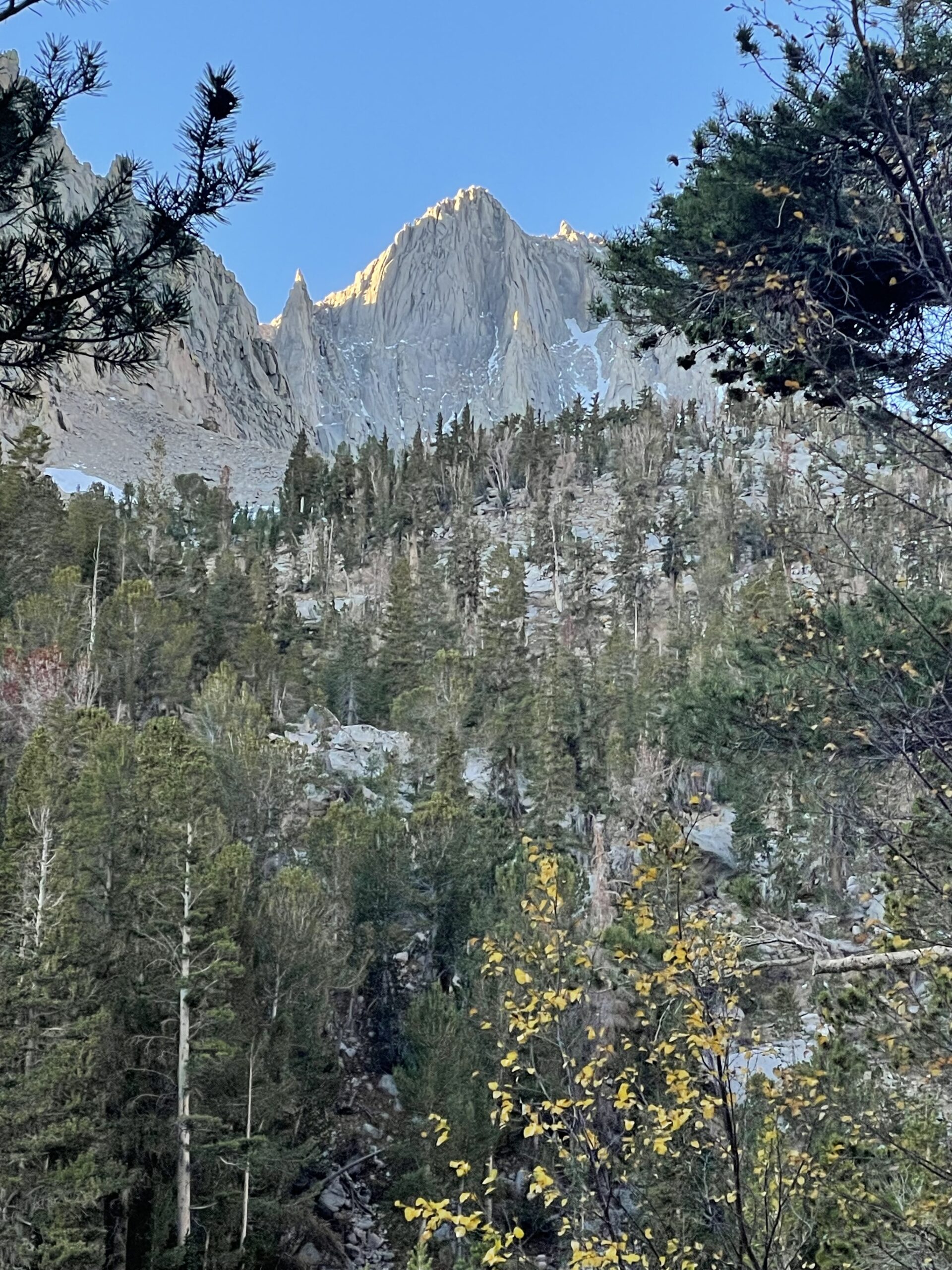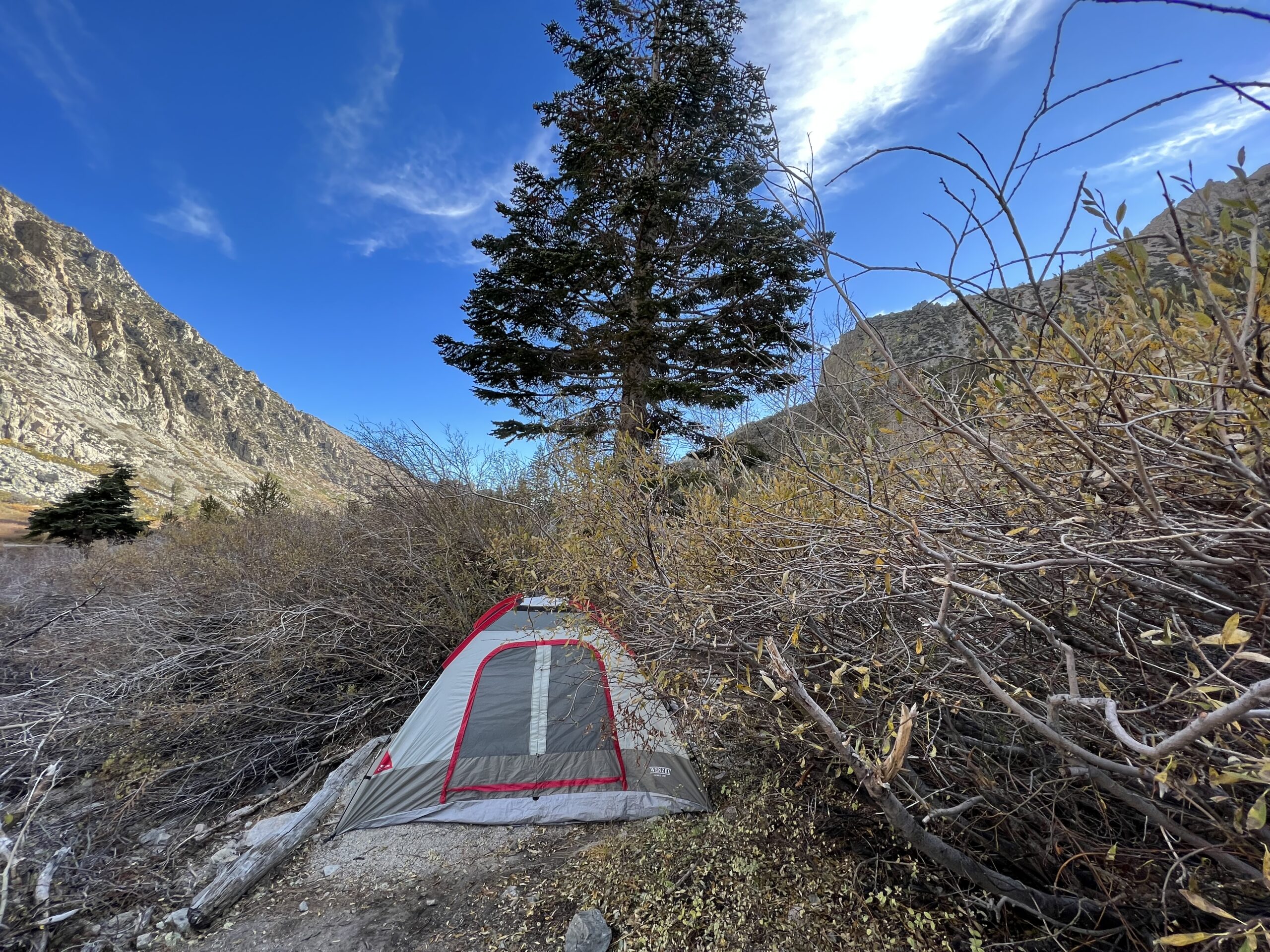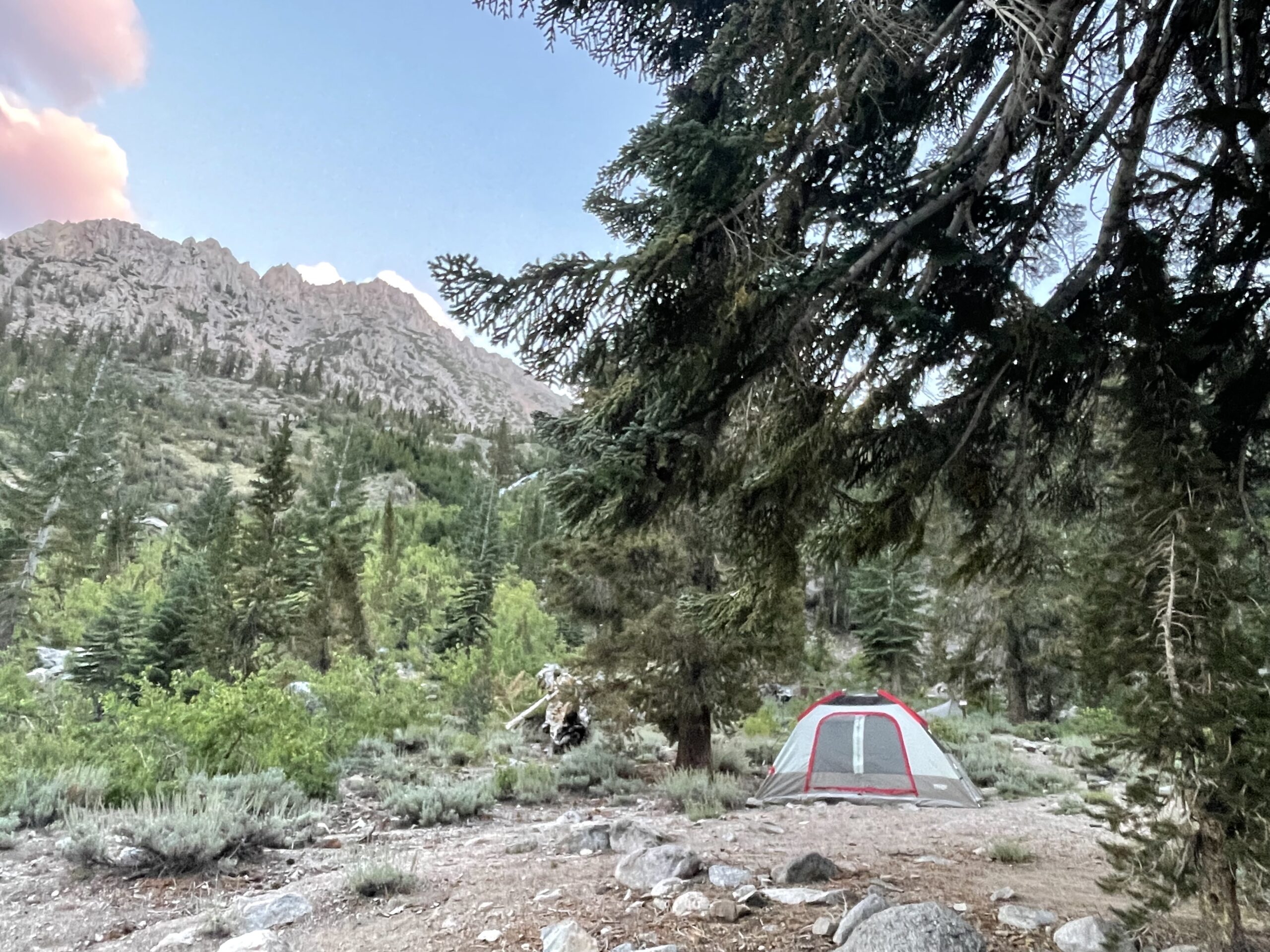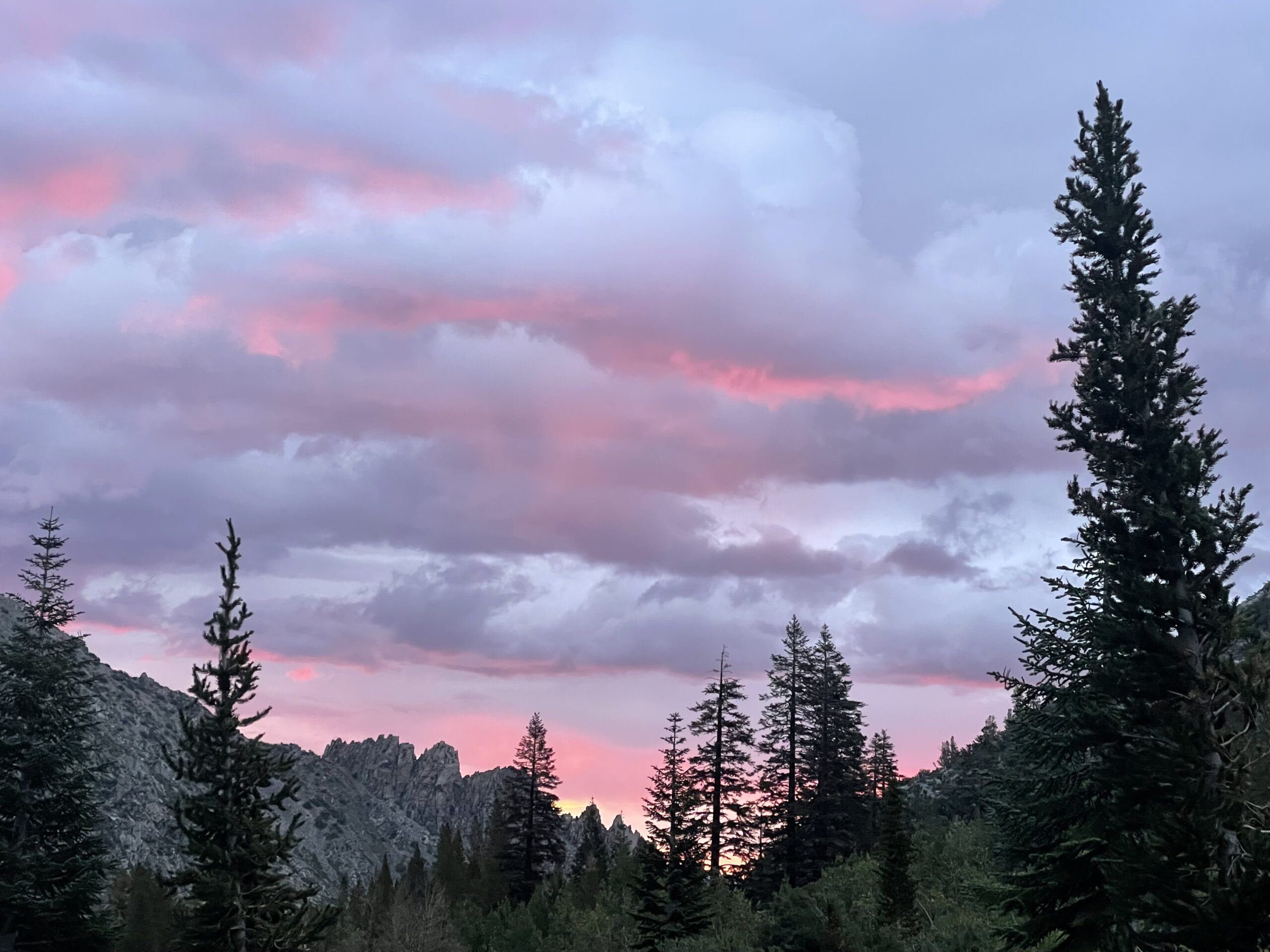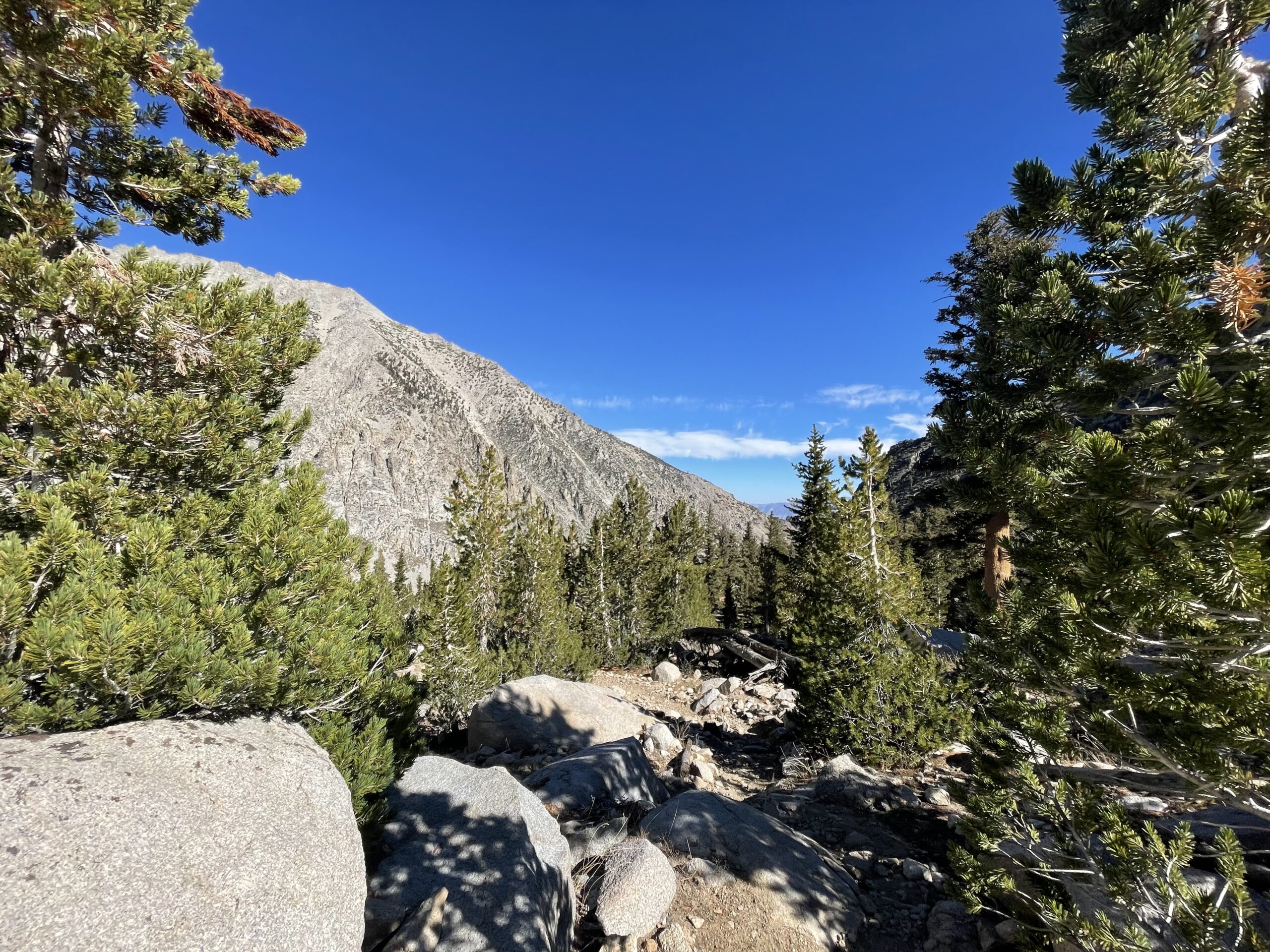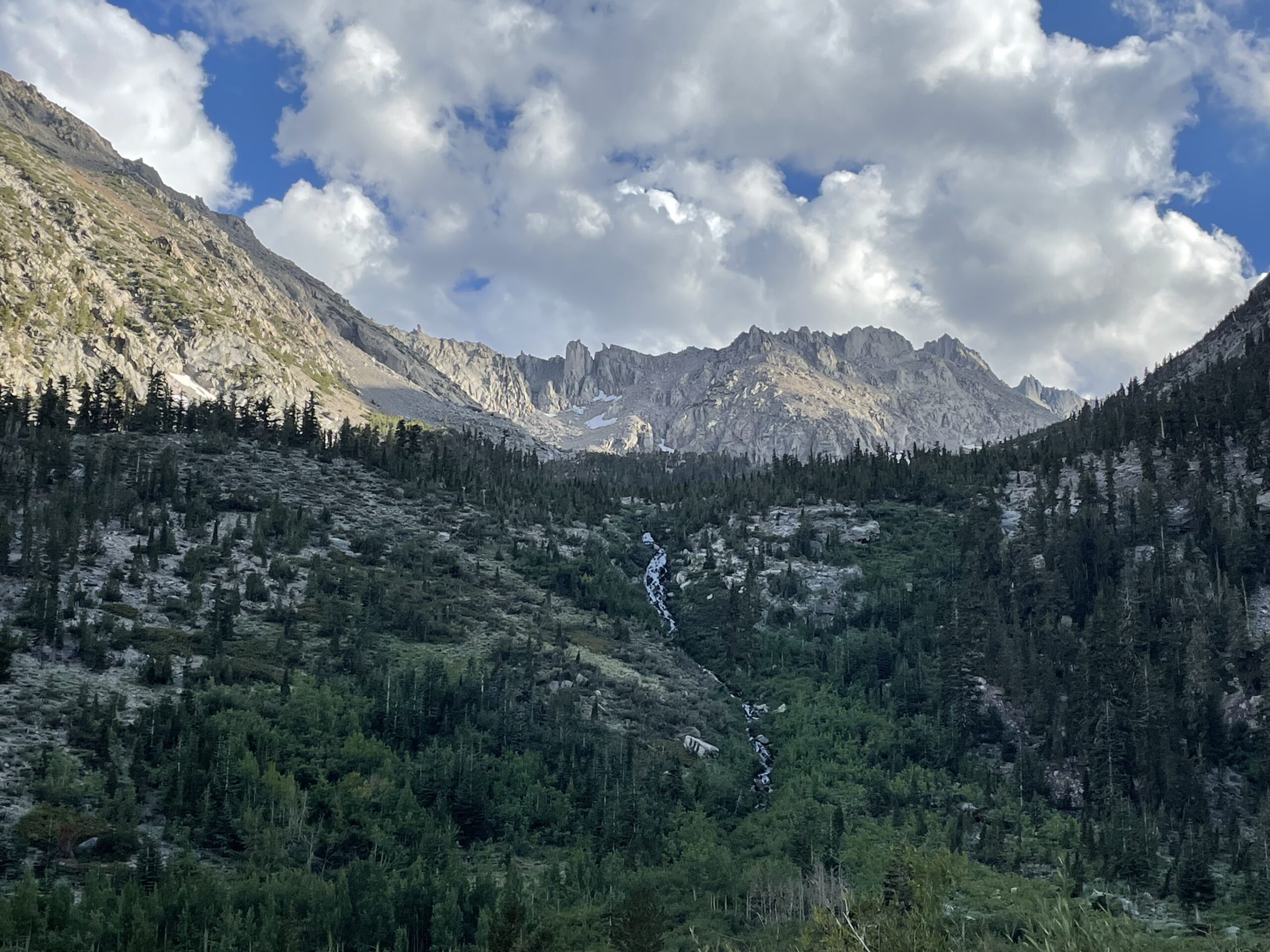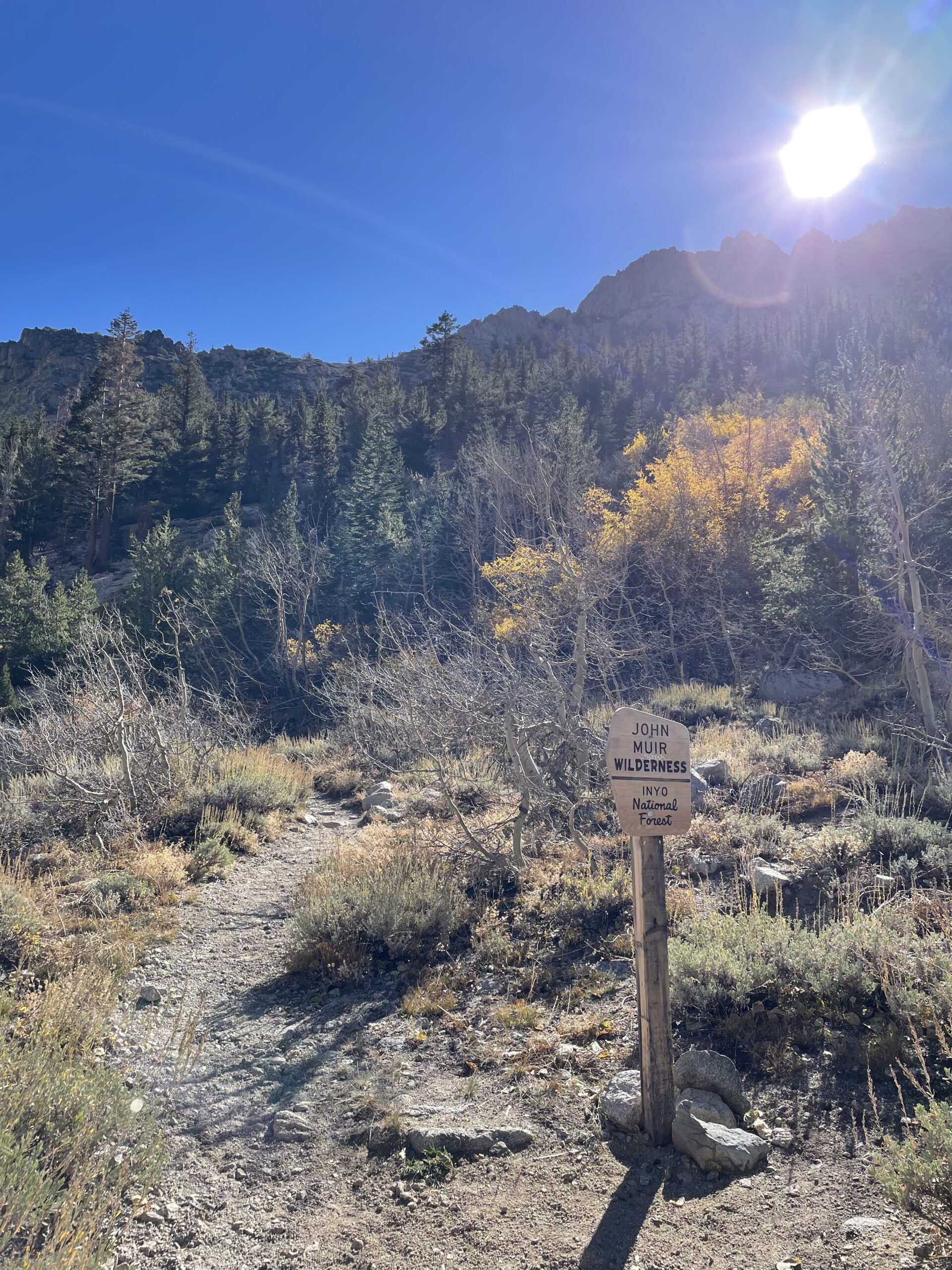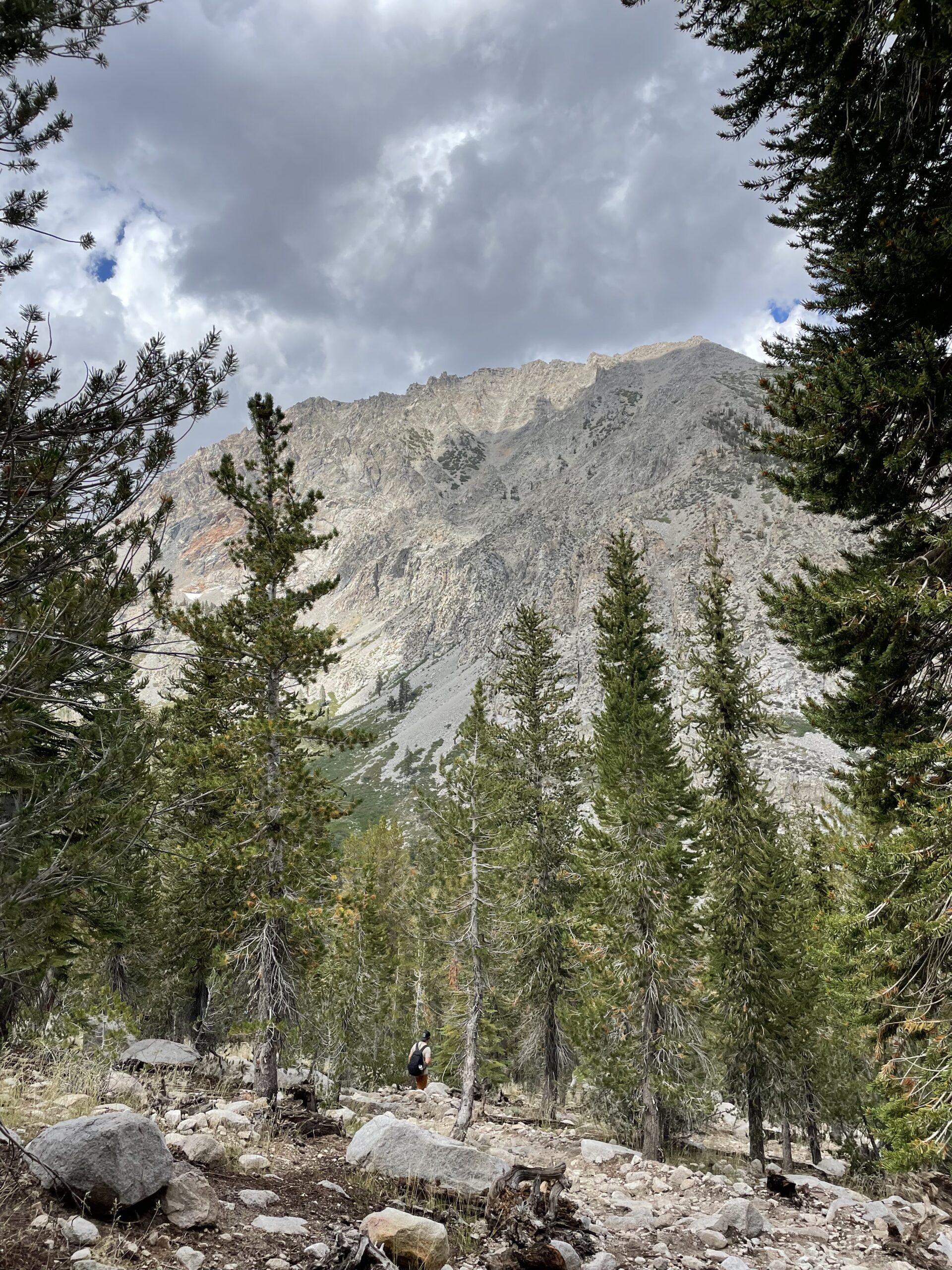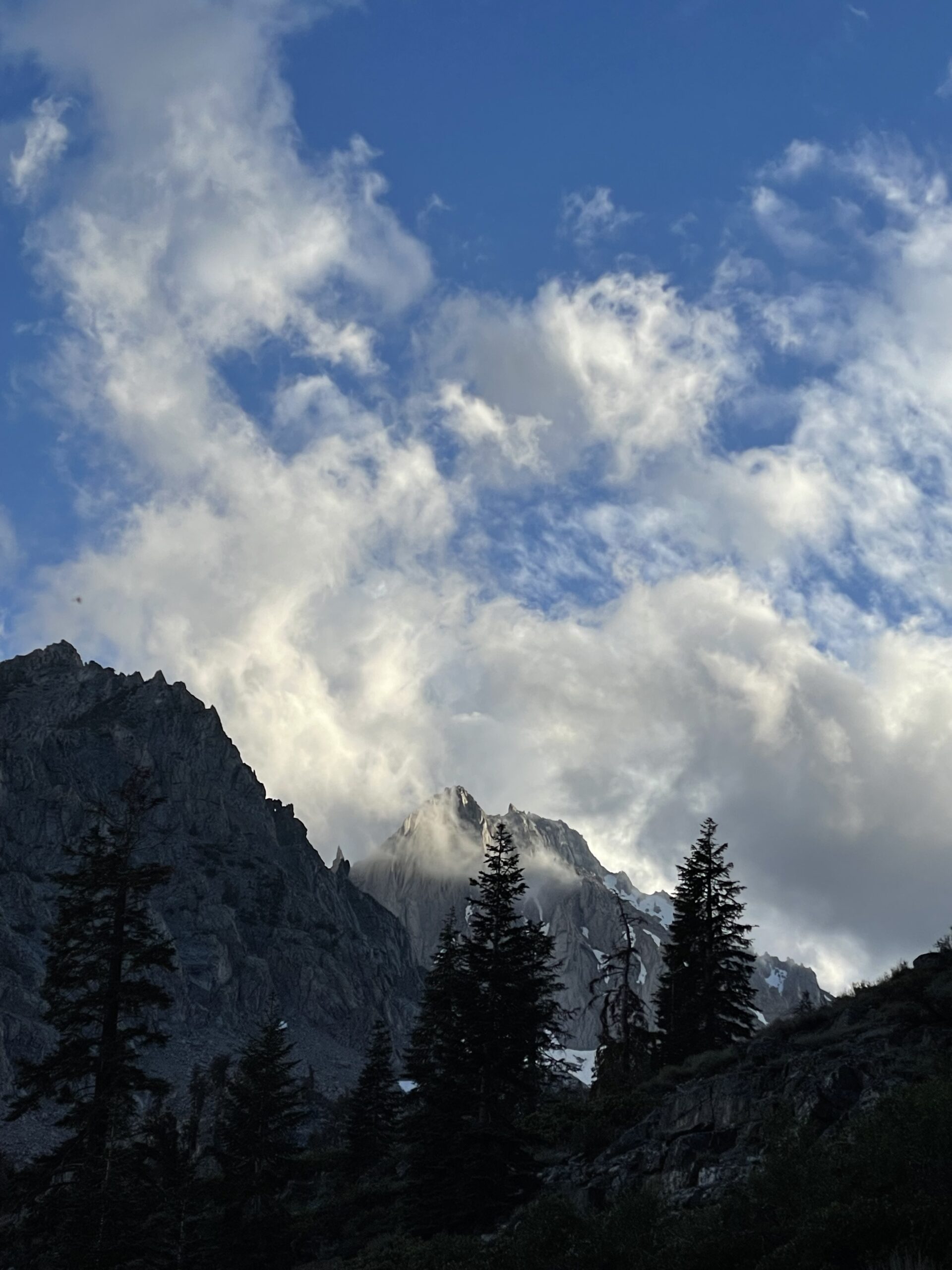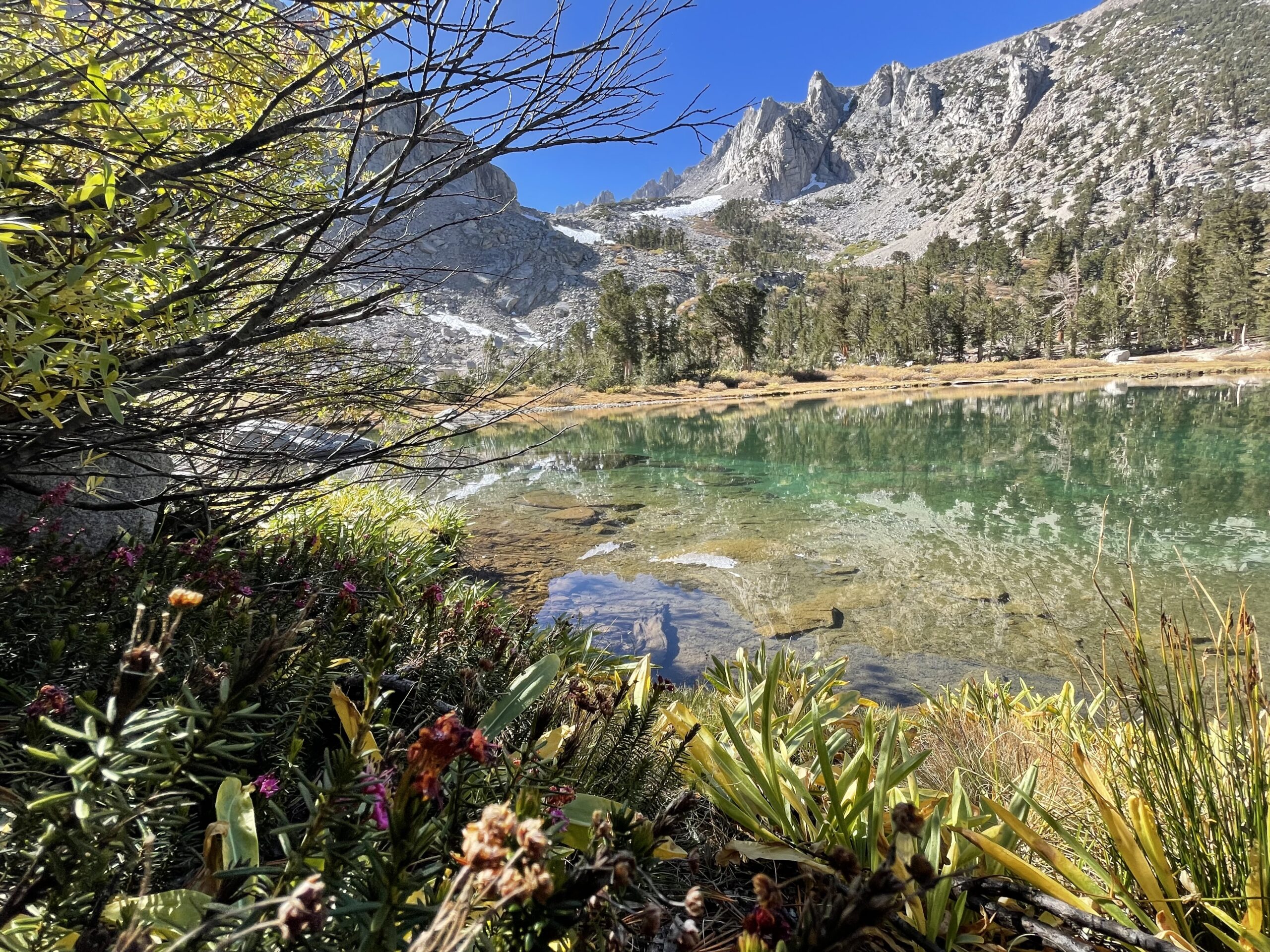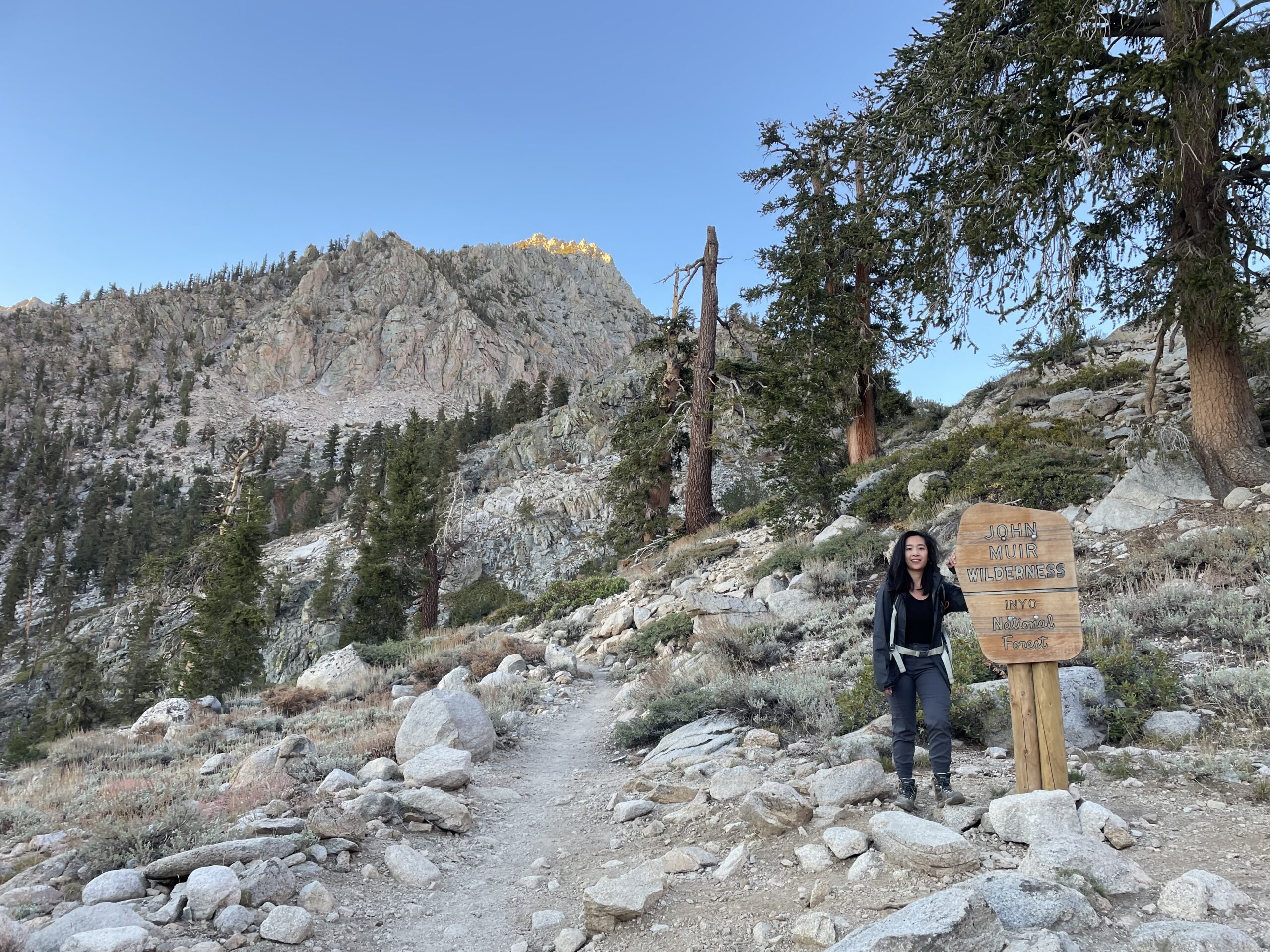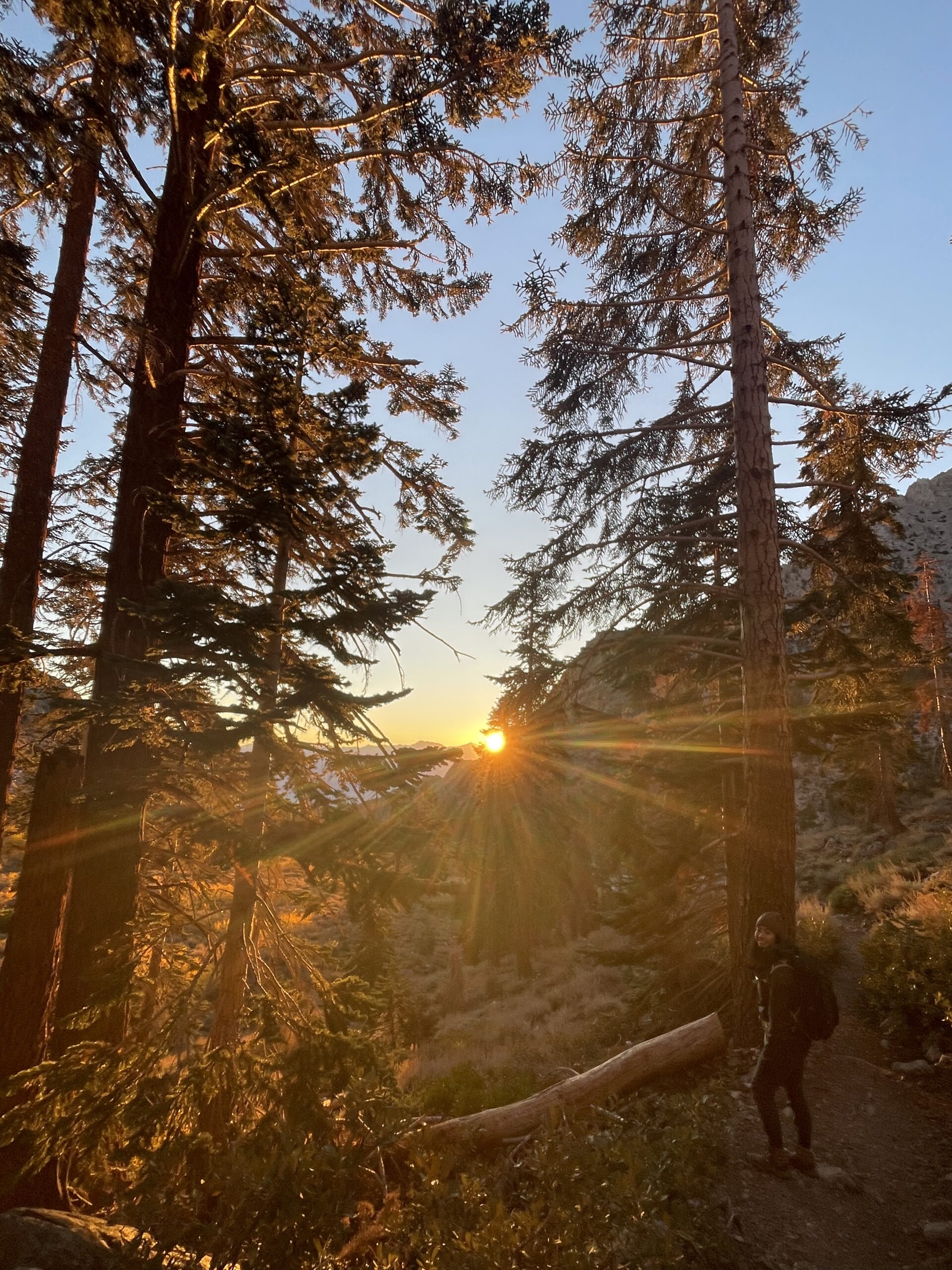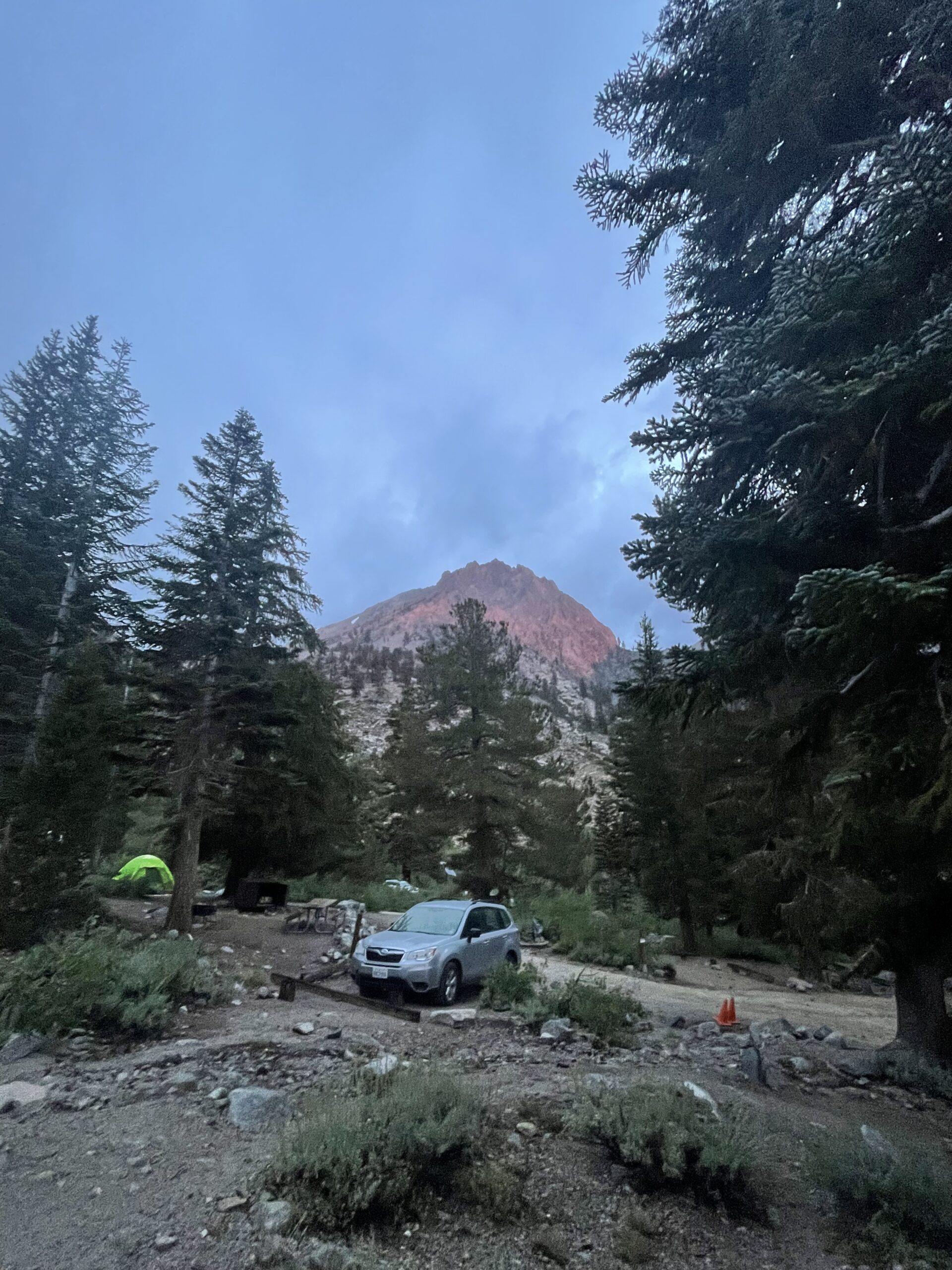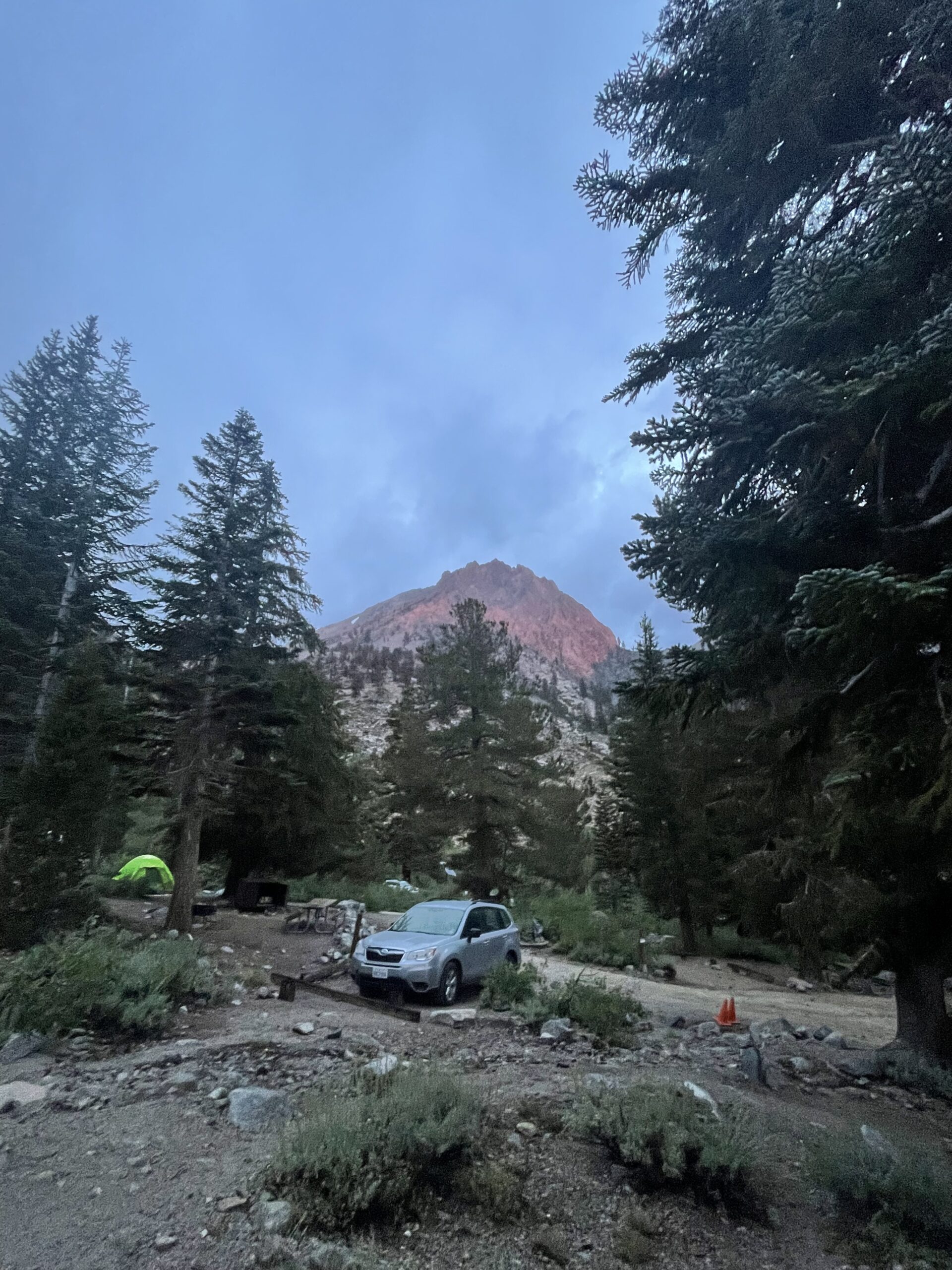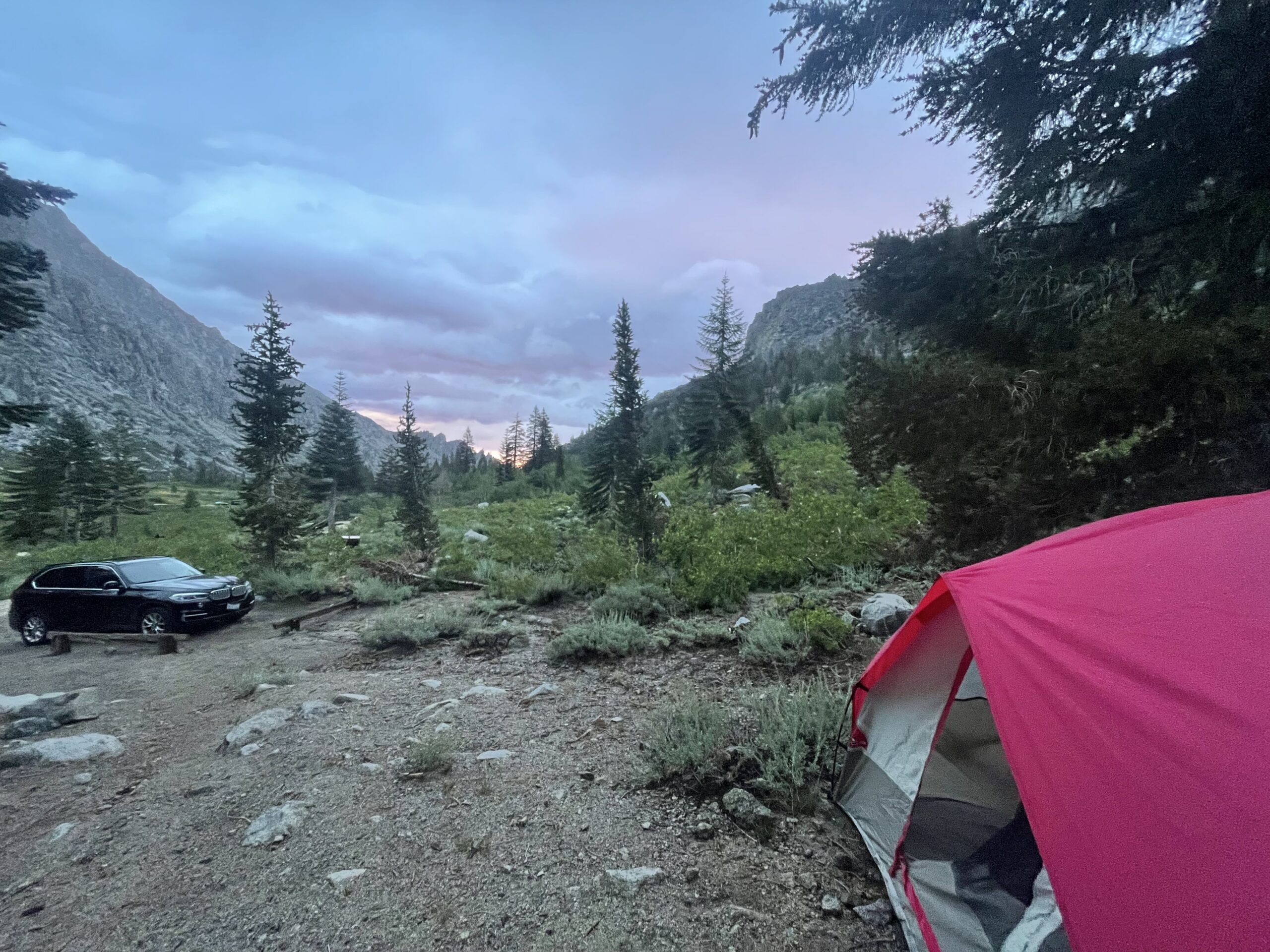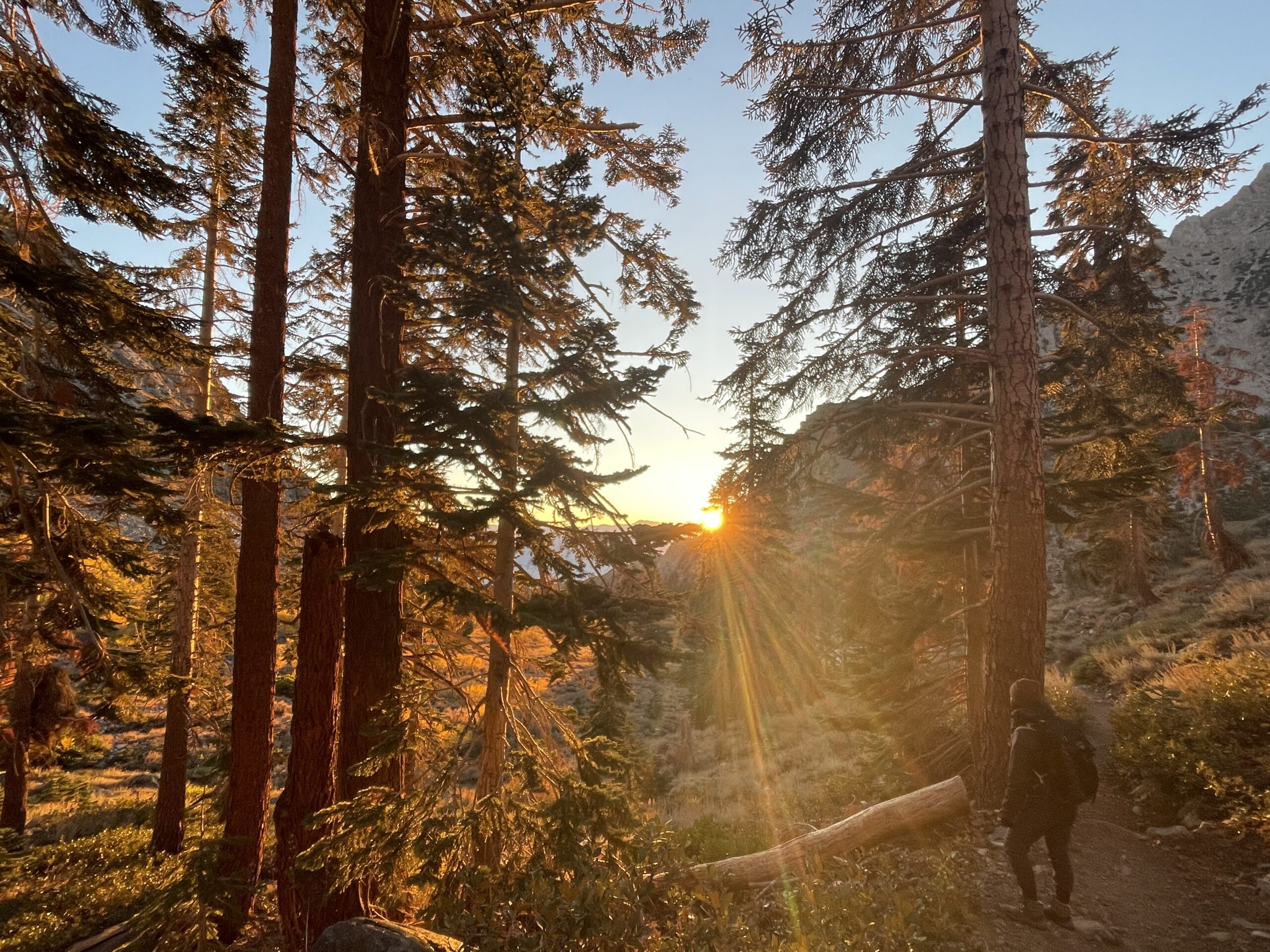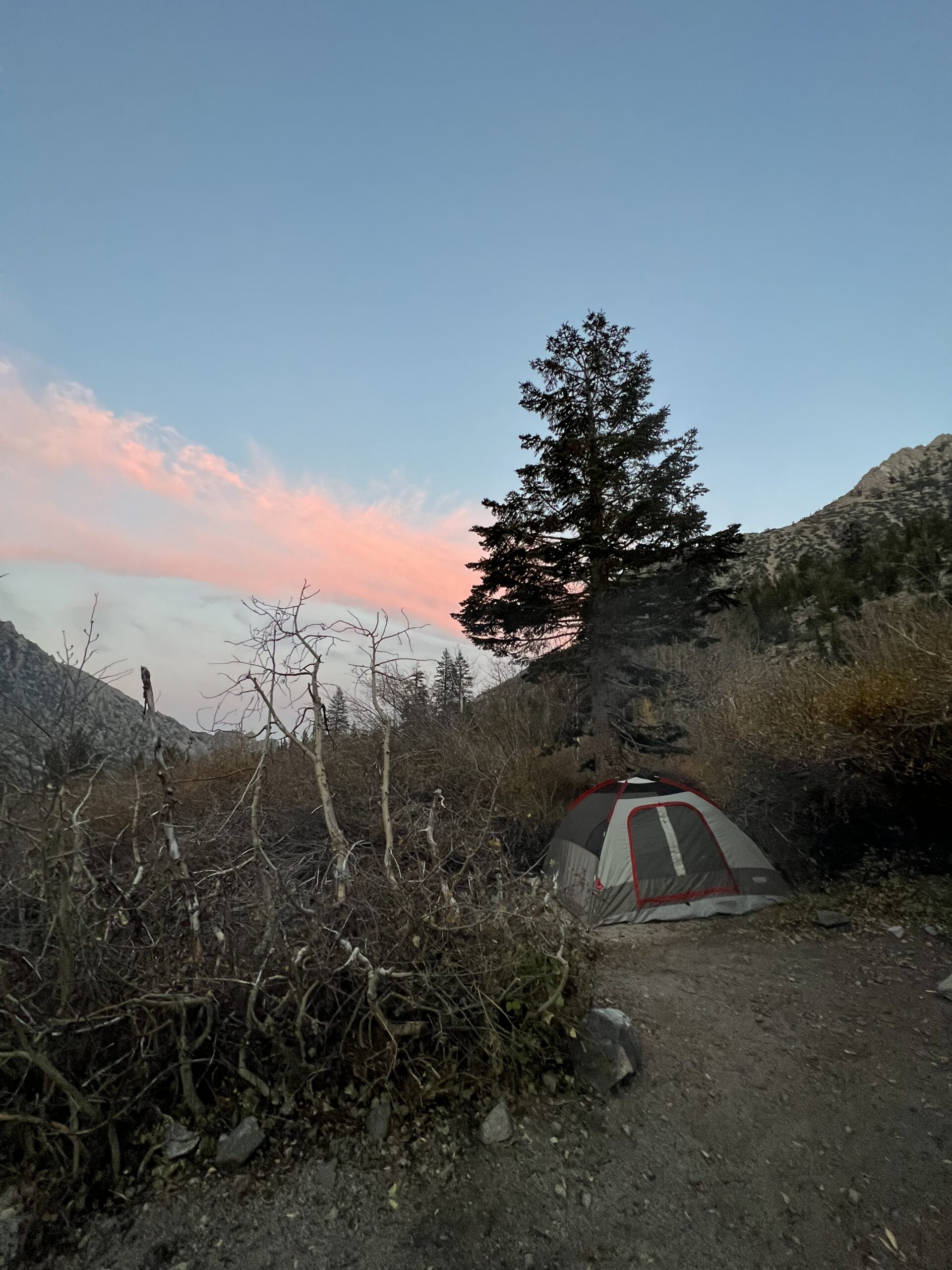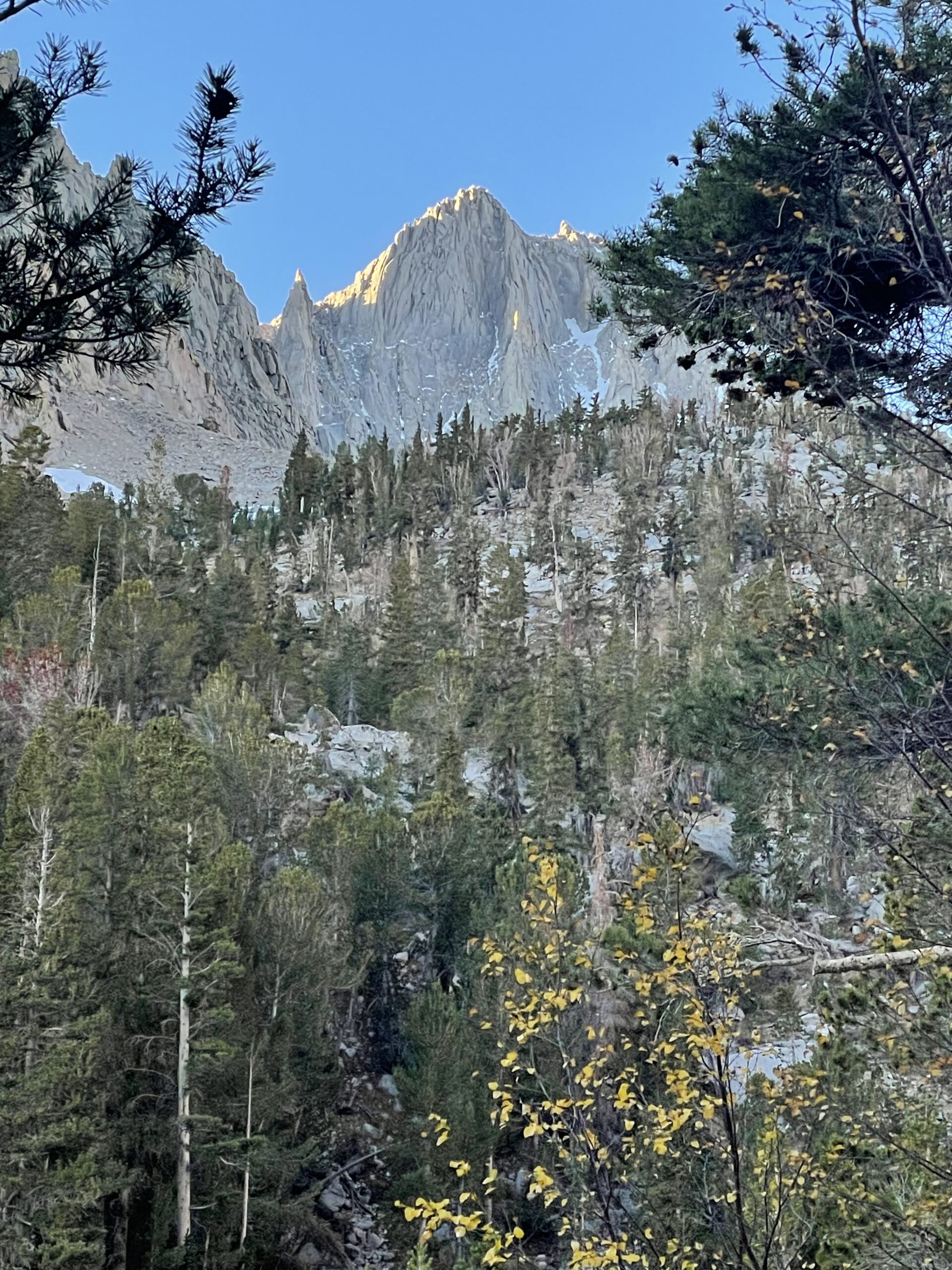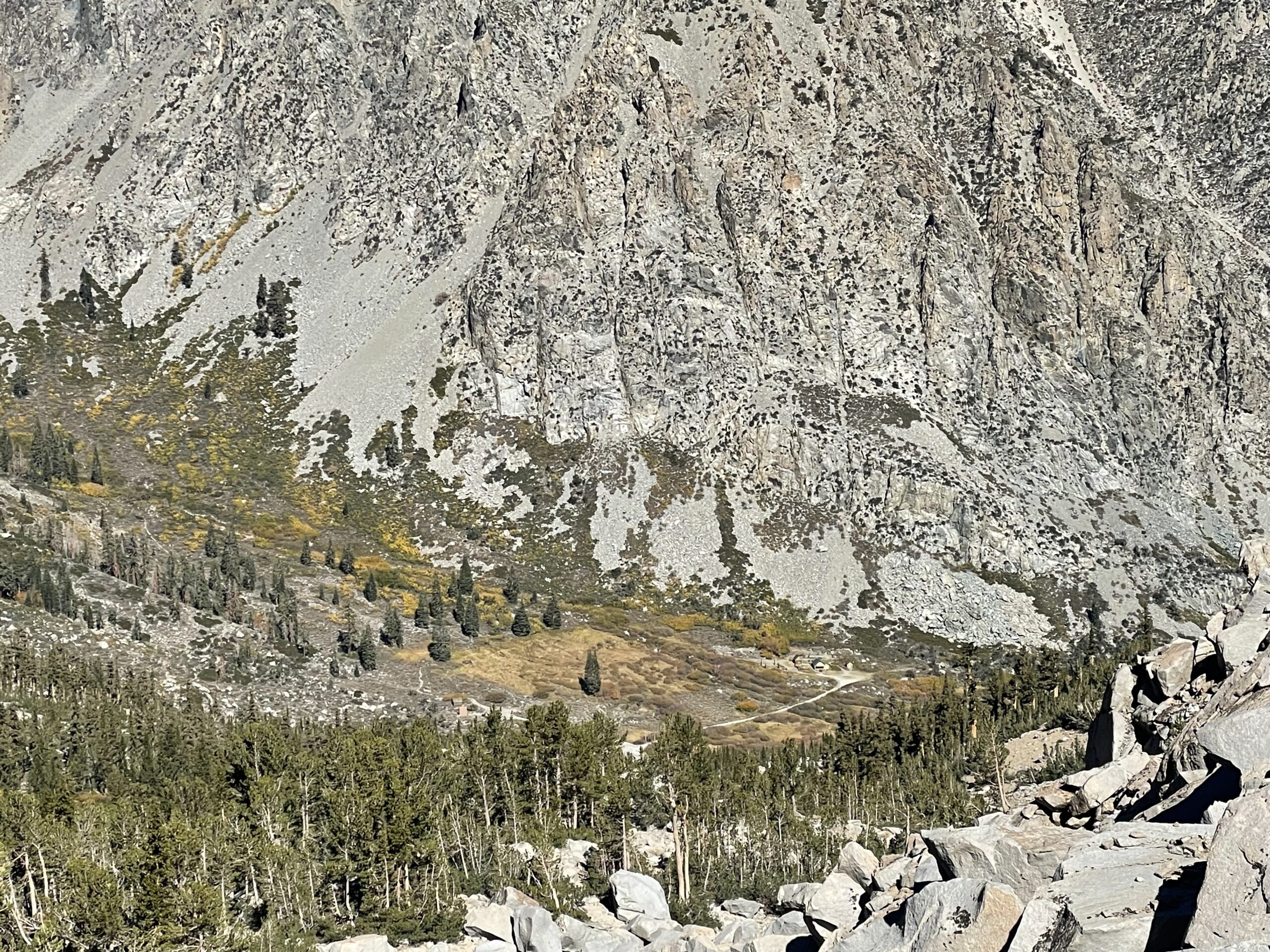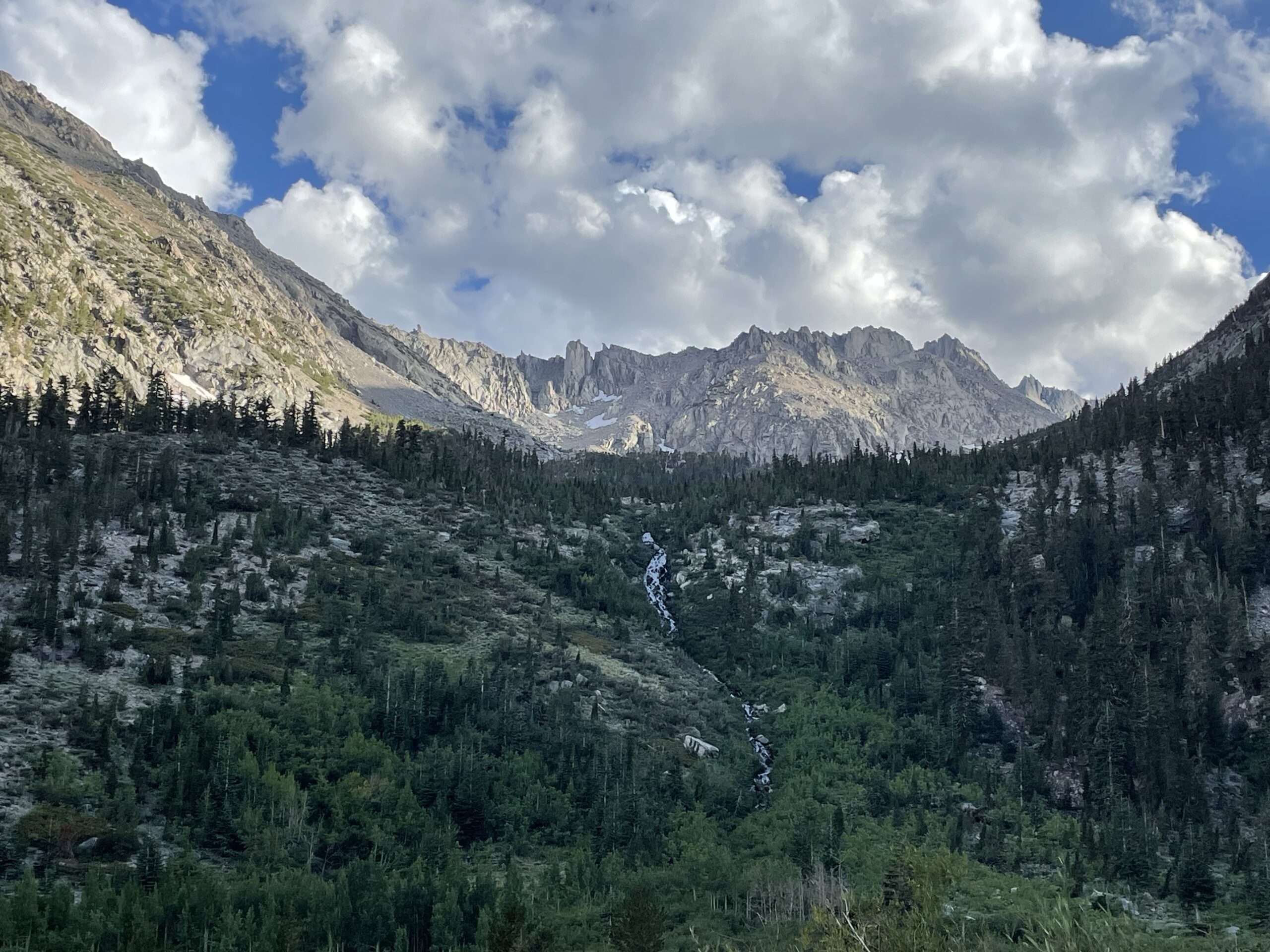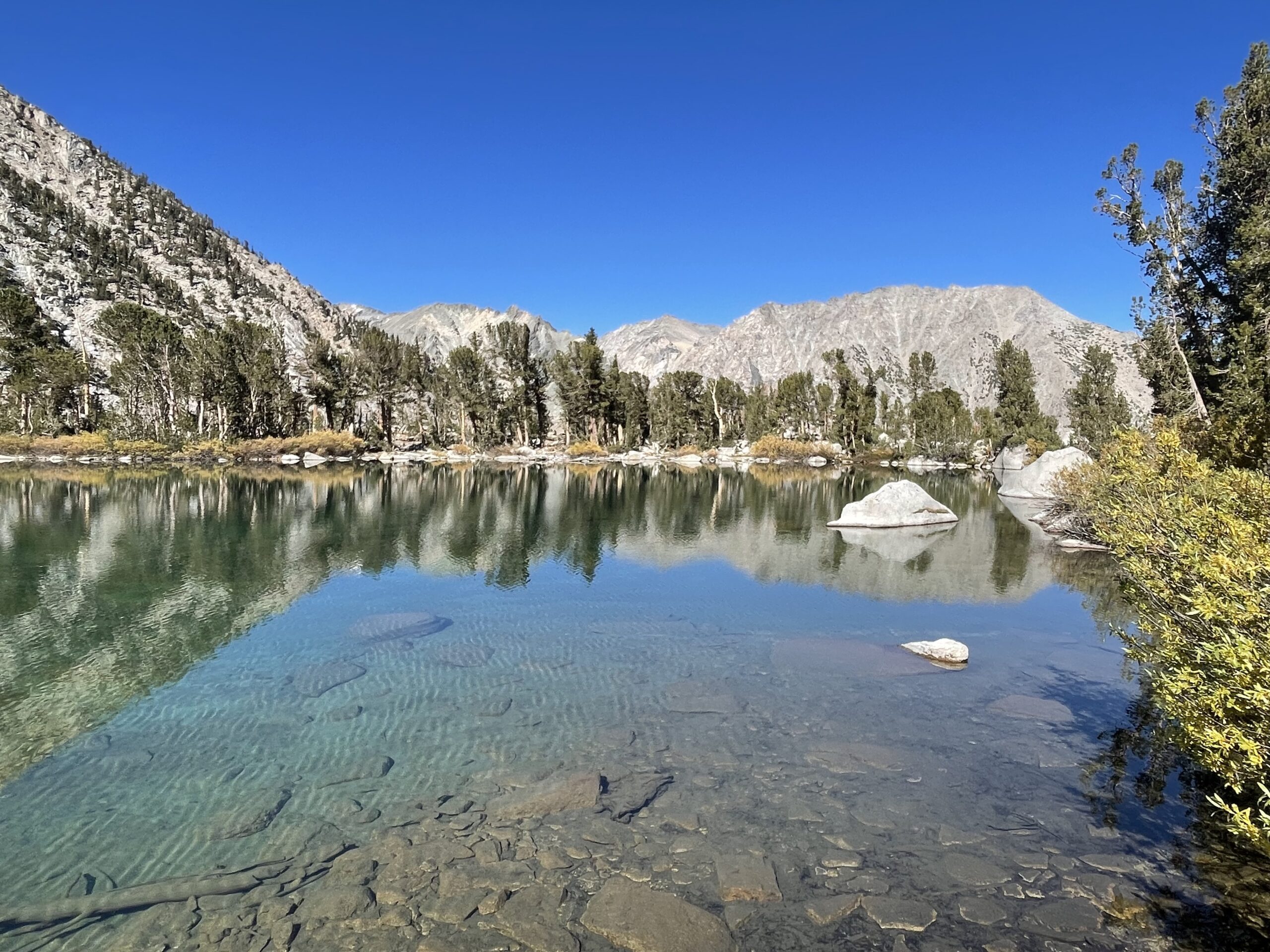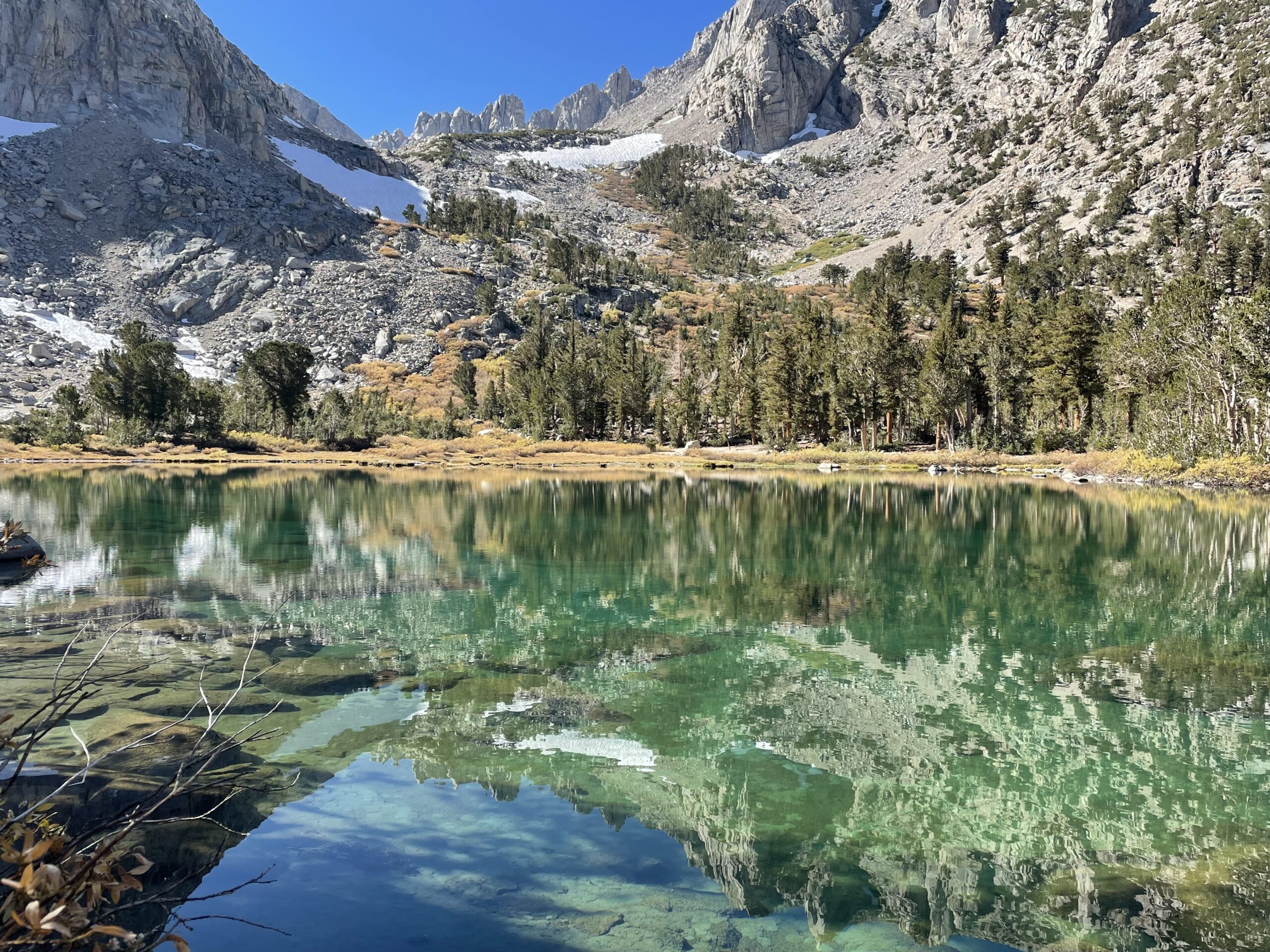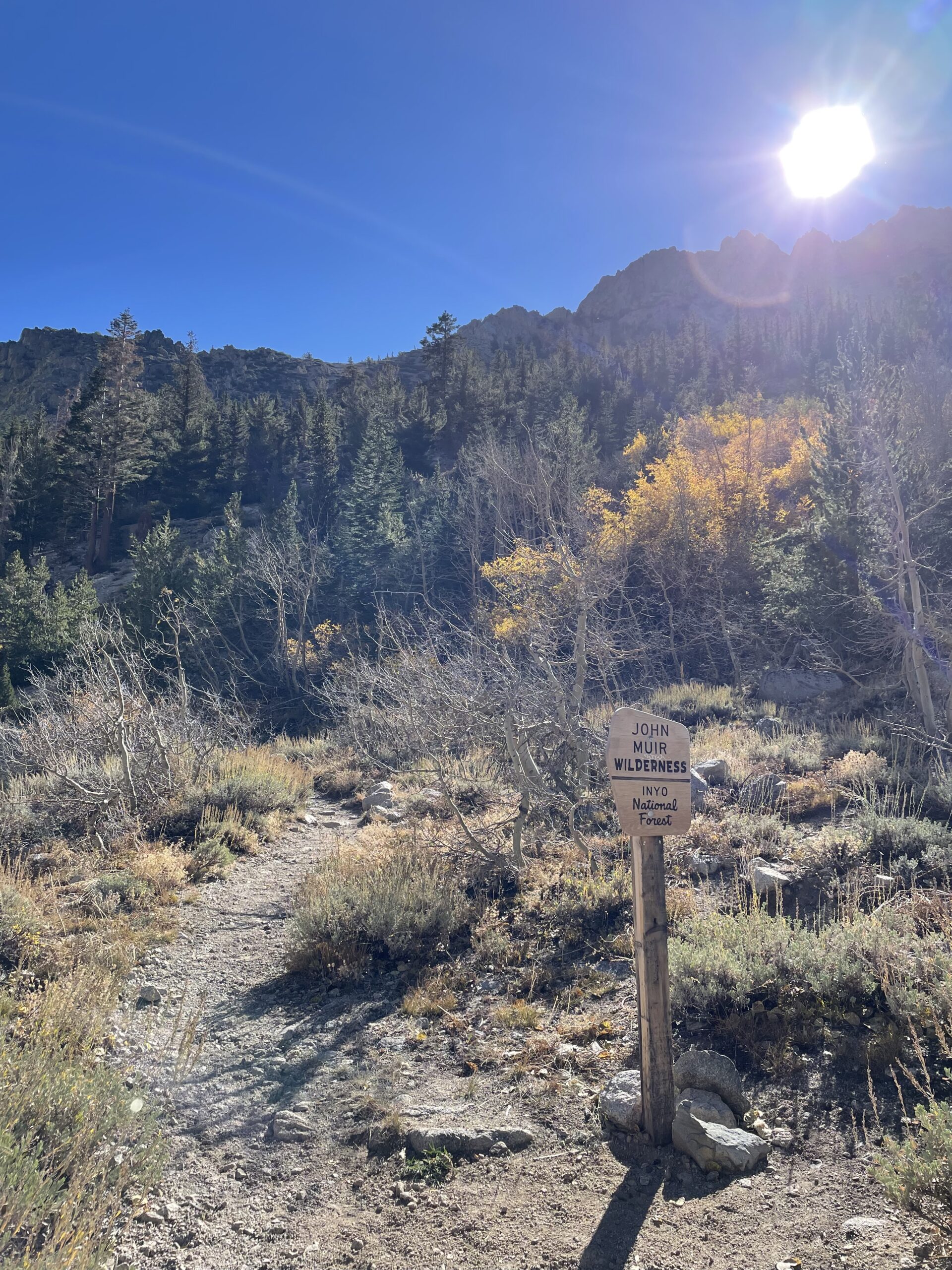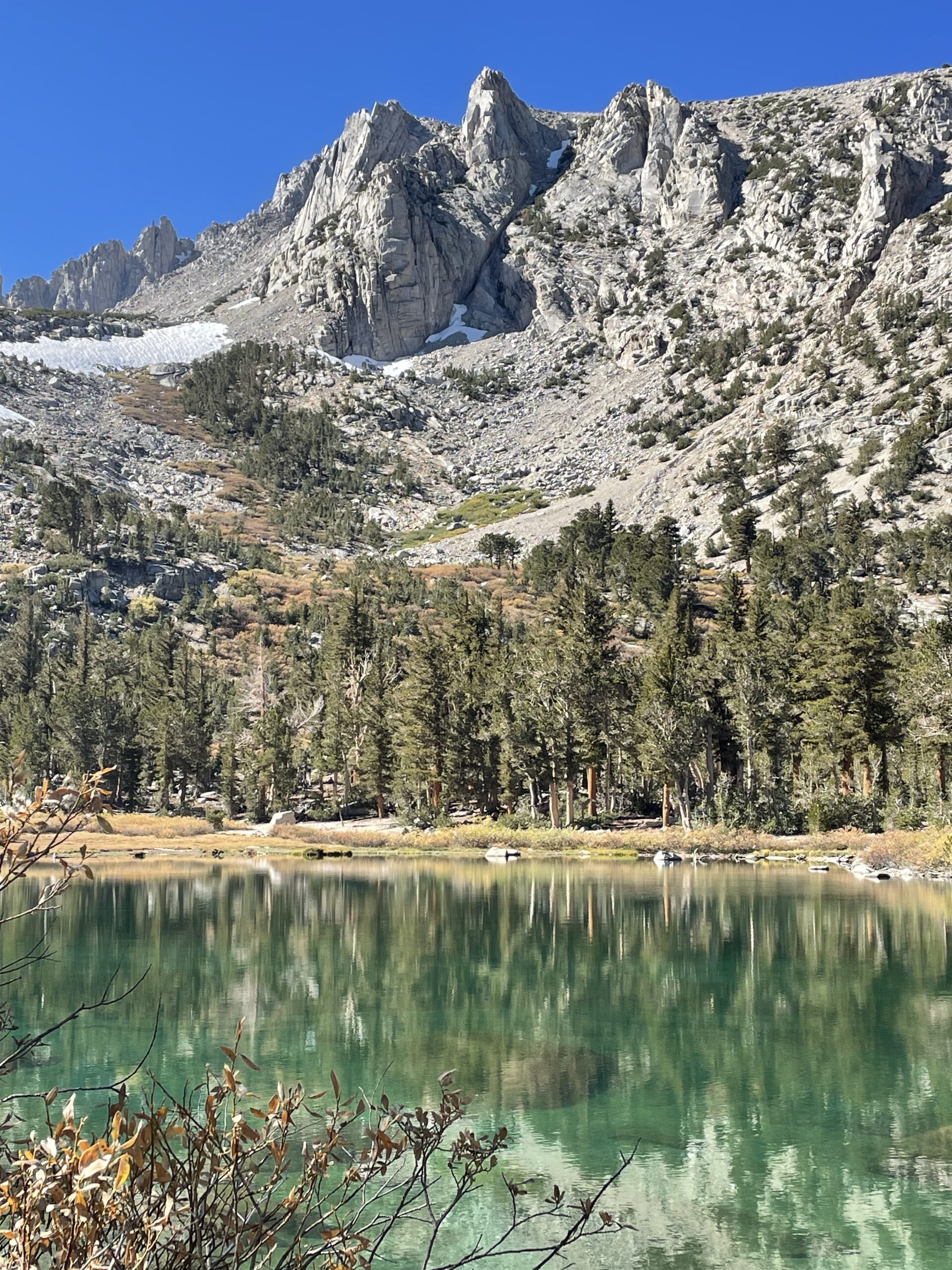
About this campground
At 9,200 feet, this is one of the more scenic campgrounds I’ve been to. Driving in from Independence, CA you’ll climb some beautiful switchbacks as you approach Onion Valley. Upon arrival you’ll immediately notice the dramatic scenery and characteristic tall, jagged peaks of the eastern sierras. Listen, and you’ll hear a waterfall towards the eastern side of camp, running parallel to a trail that goes up to the emerald green Robinson Lake. Look around more and you’ll see there’s two other waterfalls in the valley. Tall Jeffrey and lodgepole pines line the mountain slopes along with clusters of aspen and shrubs near the campground. Despite the sites being closer in proximity to each other, you don’t feel robbed of privacy, nor epic views, whichever campsite you end up with.
This campground is a great place for both casual and experienced recreationalists. It is also a haven for anglers, and provides access to the John Muir Wilderness area. It’s pretty hard to beat as far as campgrounds go.
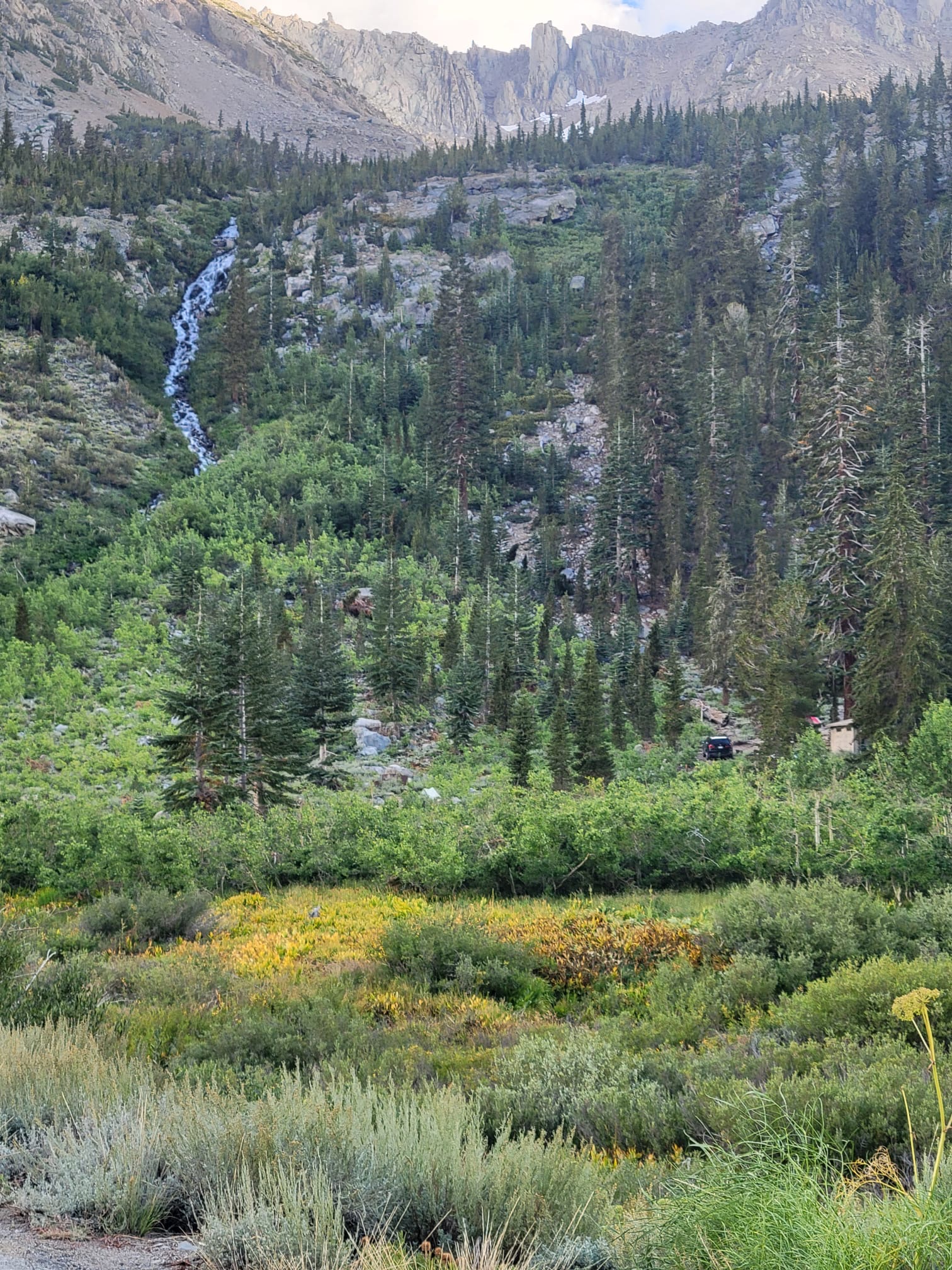
Campground details
Location: Google map to Onion Valley Campground
Facilities and amenities:
29 campsites
Fire pits
Picnic tables
2 bathrooms on site
Large parking lot for cars, trucks and RV’s
Bear proof storage lockers for food
Water spigots (though not functioning as of October 2023)
Fees: $29 per night (subject to change depending on season)
Pets: Allowed but must be on a leash
Check in: 2:00 PM
Check out: 11:00 AM
Reservations: Reservations can be made on recreation.gov, or by calling 877-444-6777. If you arrive without reservations you can also pay at the campsite in a paybox, provided a site is available.
Nearby supplies and services: The closest town is Independence, CA, which is the town you drive through when you turn off the road towards Onion Valley, and is 13 miles away. Services are limited there, so you can also head to Lone Pine, CA which is about 29 miles from the campground and has a lot more stores and supplies.
Important notes:
Not every campsite has a good parking spot (we try to note which ones, below). There is a large parking lot so you will have parking, but we realized some sites do not have a dedicated parking spot, or not much space on the side to pull off. See our campground list below for our rankings and notes.
As of October 2023, the water spigots were not functioning. Be prepared with several gallons of backup water, and/or a good filtration device provided there is running water (little Robinson creek runs by campsites 7 and 8).
The road around the campground is narrow and has sharp curves – please go slow.
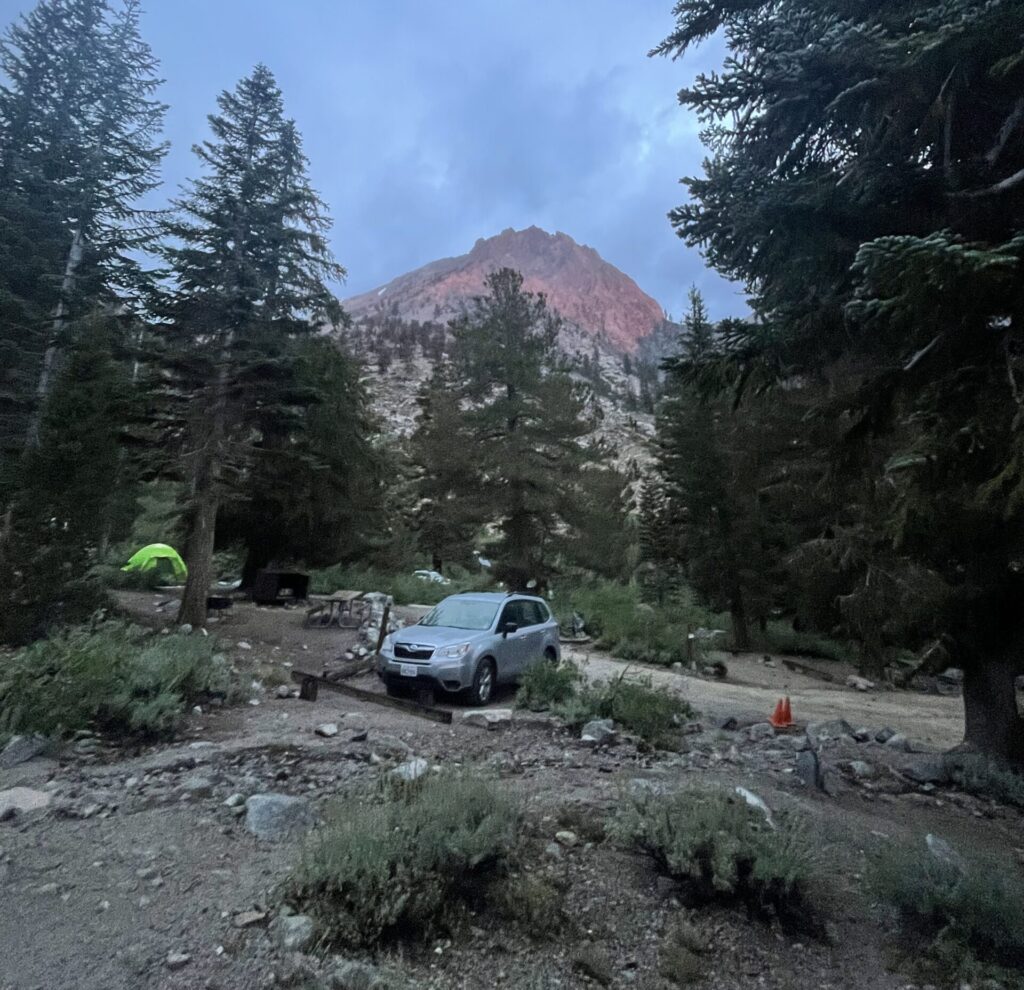
Main attractions
Robinson Lake Trail: This is a short 2.5 mile hike round trip (1.25 each way), and is mostly steep and uphill for the first half. However, it’s very rewarding. First, you’ll climb steadily through a forest of tall, ancient looking Jeffrey pine trees. It will open up to stunning views across the valley until you reach some large boulder fields as you approach the lake. Robinson Lake is a beautiful emerald green color, and there are plenty of places to sit down and admire the view with wildflowers. The hike back down is still great as you’re surrounded by the mountain peaks, peering down into the Onion Valley campground.
Kearsage Pass: The Kearsage Pass is a beautiful hike with sharp peaks, waterfalls and dramatic views, passing by several alpine lakes and eventually ending at a group of lakes called the Kearsage Lakes. This trail has a steady incline and can be challenging for some. But the scenery and lakes are hard to forget. This 12 mile trail intersects with the John Muir Trail just above the Kearsage Lakes, past Bullfrog Lake.
John Muir Trail: A famed 200+ mile journey through the eastern sierra’s, beginning at Yosemite National Park and ending at Mt. Whitney – the tallest mountain in the continental US. This is one of the most highly regarded trails in the US, and usually takes people 1 month to complete.
Trout fishing: The eastern sierras are a goldmine for trout fishing. Most notably, the golden trout and cutthroat trout. You’ll find plenty of hikers packing in their fishing rods for an afternoon excursion into the many lakes that surround the campground, hoping to bring back a fresh catch to camp. What could be better than that.
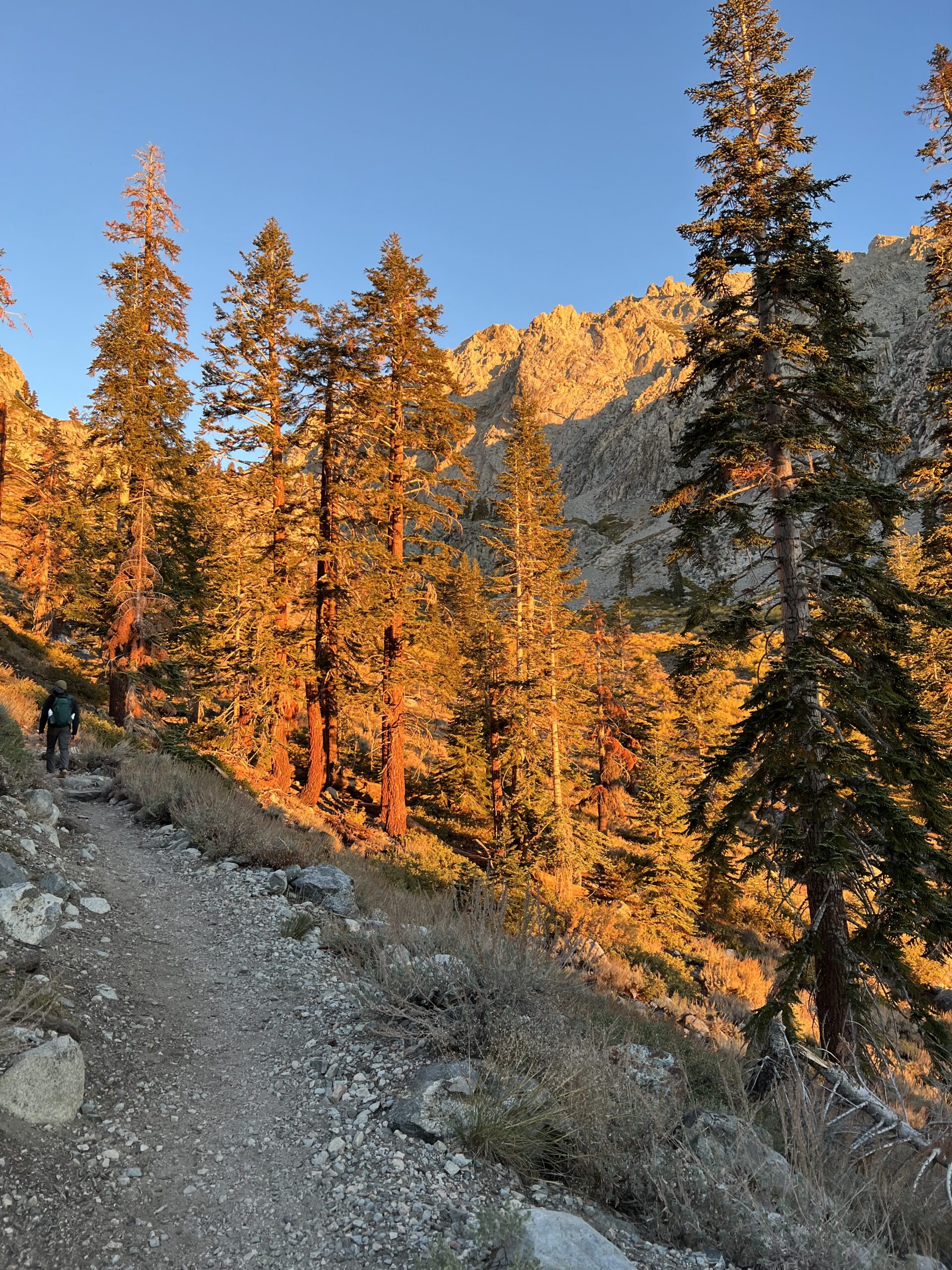
What type of land are you on
Current Management
The Onion Valley Campground is part of the Inyo National Forest, and is managed by the National Forest Service. The campground is surrounded by the John Muir Wilderness, which is jointly managed by the National Forest Service and the National Park Service as it runs through parts of the Sequoia and Kings Canyon National Parks.
To learn more about National Forest, Wilderness Areas and other public lands, read our article What are America’s public lands?
Original Inhabitants
As part of the larger Mono tribe, this area was originally inhabited by the Eastern Mono tribe, while the Western Mono tribe lived on the more western slopes of the Sierras and into the San Joaquin valley. The Mono tribes have been living in the central California region for millennia, and today there are around 2,300 individuals that are part of the federally recognized tribe.
*Map image from Native Digital Lands website which shows the original Eastern Mono Tribe territories.
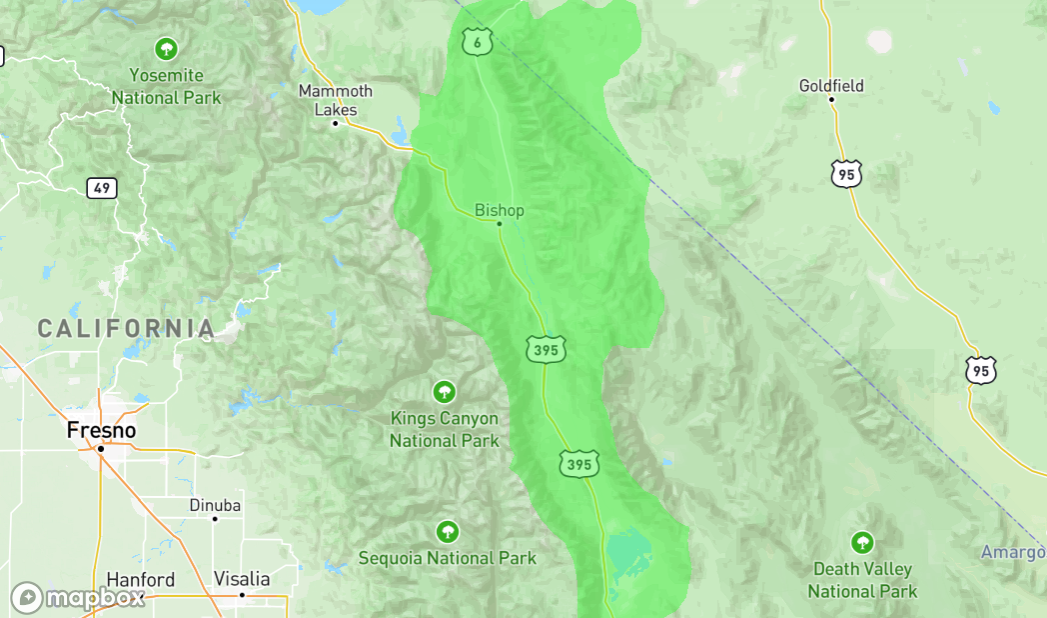
Natural Surroundings
Onion Valley Campground is immersed in the eastern Sierras. In fact it’s adjacent to one of the largest contiguous undeveloped/roadless groups of Wilderness Areas in the lower 48, which helps support the flora and fauna that live there.
Among the slopes and valleys you’ll find the common trees and shrubs of the eastern Sierras such as lodgepole pines, Jeffrey pines, Douglas fir, aspen trees, and the dogwood.
Taking residence in the area are mountain lions, mule deer, black bears, pine martens, pikas, golden trout, brook trout, and local bird and raptor species such as the northern flicker, spotted towhee, the osprey, and the red-shouldered hawk.
As always, be mindful and respect the wildlife and plants. Please do not feed or approach wild animals, and please do not go off trails or designated areas.
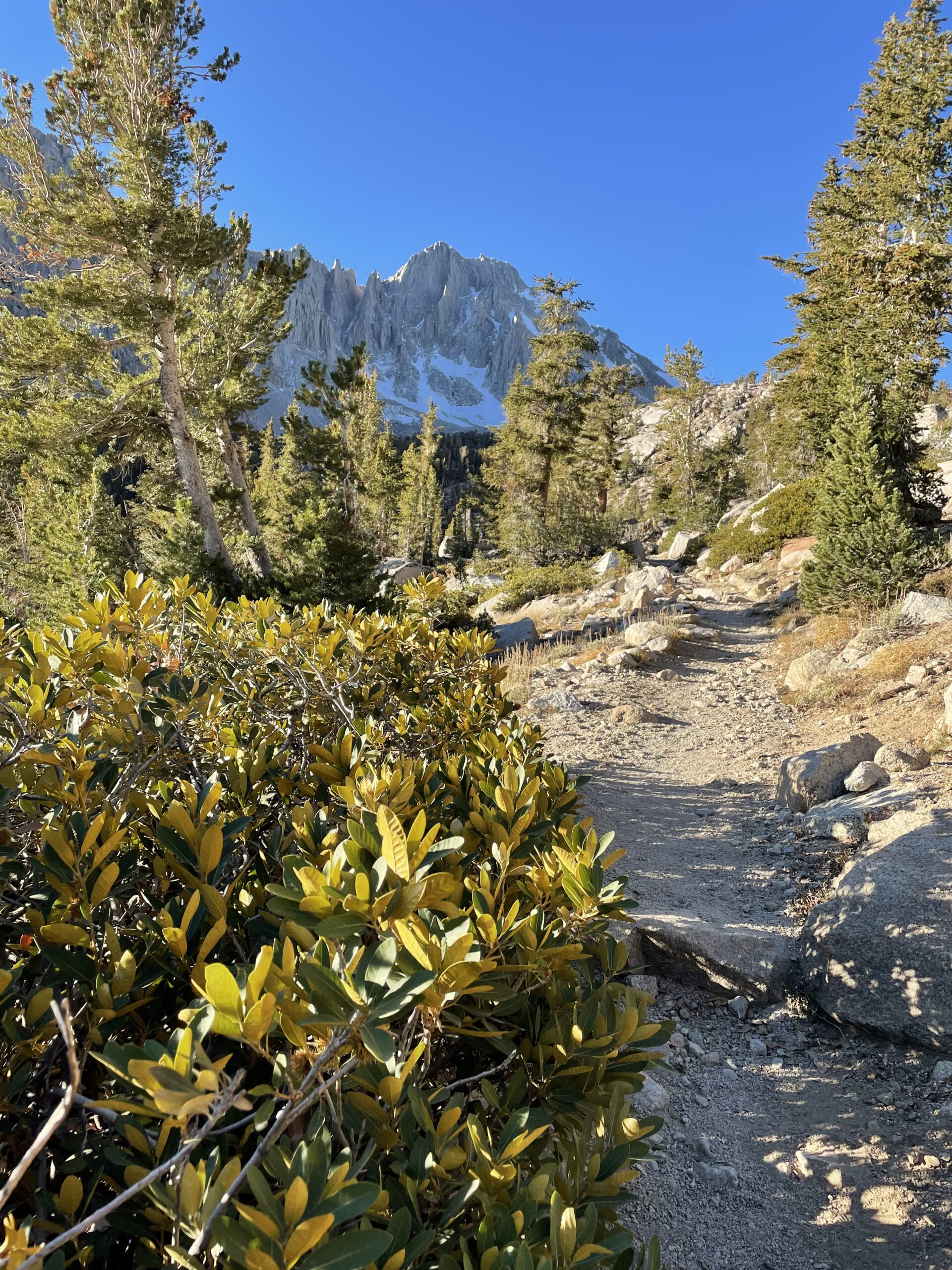
Campsite descriptions
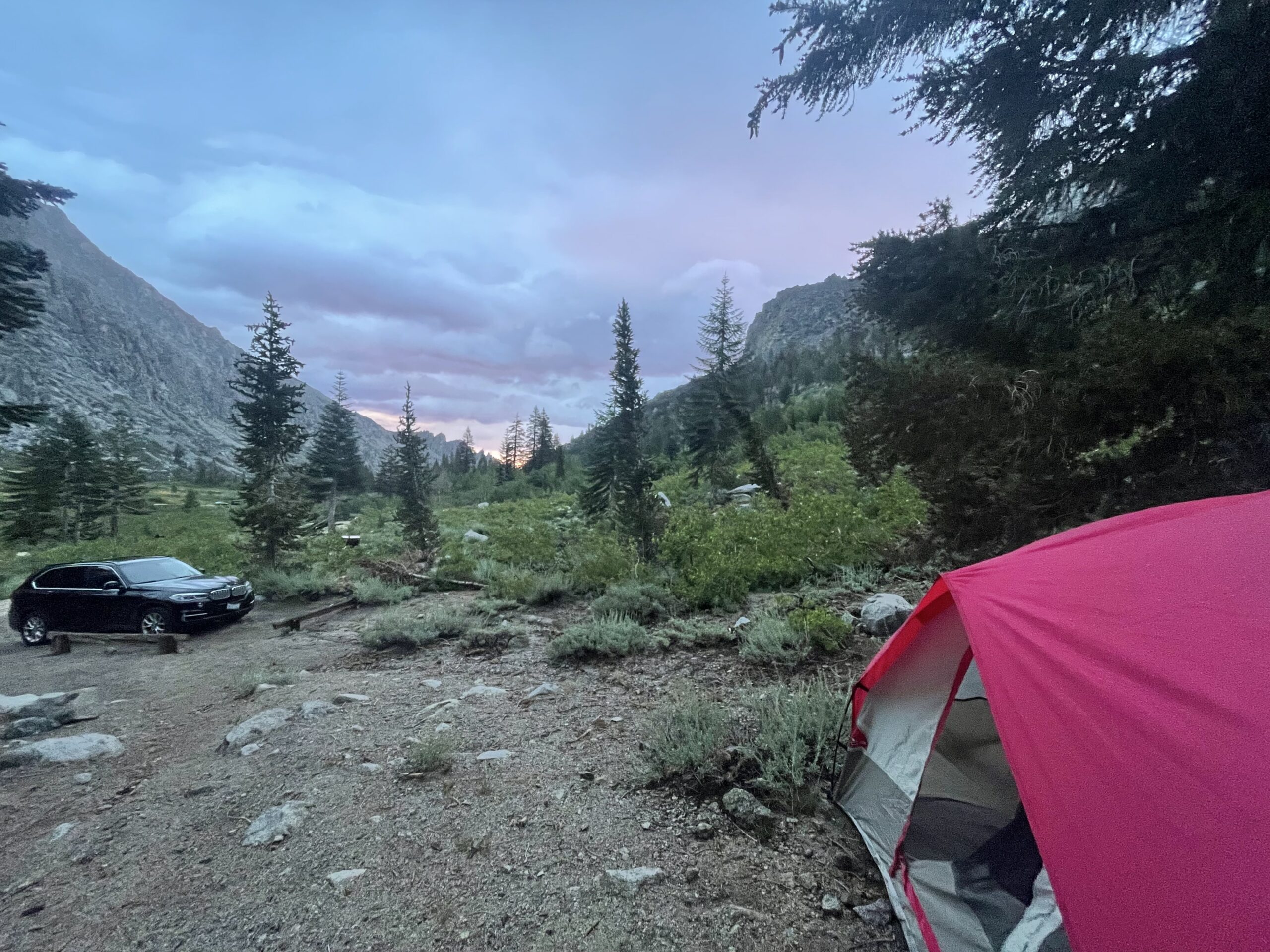
The descriptions below are to help guide your decision when reserving a campsite. In all honesty, every site here is great because it’s such a beautiful area. These are subjective and you may certainly disagree with our findings. But either way, we think you’ll enjoy any time spent here at this campground. Our favorites are noted.
*If we do not have a description, it means we were unable to investigate as we did not wish to disturb other occupied campsites.
- Campsite 1: Parking available. Great site but close to the main parking lot. Could fit two tents, possibly three. Shaded with tree coverage.
- Campsite 2: Can fit one RV or two vehicles. Next to main parking lot, not as private.
- Campsite 3: Has parking for two vehicles, although a tight squeeze. Not as private.
- Campsite 4: Has parking for one, possibly two vehicles. Very small, ideal for one tent.
- Campsite 5: Parking more difficult. Space for two small tents.
- Campsite 6: Parking more difficult. Can fit one tent comfortably, maybe two smaller tents but they would be very tight. Not much shade.
- Campsite 7: Great site. Parking more difficult. Space for two tents, maximum. Shaded and relatively covered from the rest of the camps.
- Campsite 8 (favorite): One parking space. Excellent views of a waterfall. Next to the Little Robinson Lake trailhead. Can fit two tents.
- Campsite 9: Fits one tent, parking available.
- Campsite 10: Next to bathroom. Can fit one tent but could squeeze two. Parking available
- Campsite 11 (favorite): Has parking. Great site, across from bathroom. Can fit three tents maximum, two tents comfortably.
- Campsite 12 (favorite): Has parking. Big site, can fit two or three tents. Next to the bathroom.
- Campsite 13: Great site. Has parking, can fit two tents.
- Campsite 14: Has parking. Great site. Can fit two tents maximum.
- Campsite 15: Has parking. Two cars and two tents maximum. Great site, lots of trees.
- Campsite 16: Walk in site only.
- Campsite 17: Walk in site only.
- Campsite 18: Walk in site only.
- Campsite 19: Walk in site only.
- Campsite 20: Can fit two cars, two tents.
- Campsite 21: Walk in site only.
- Campsite 22: Walk in site only.
- Campsite 23: NA
- Campsite 24: NA
- Campsite 25: Walk in site only.
- Campsite 26: Great site. Can fit two cars, and up to two tents.
- Campsite 27: Can fit one car, and one tent.
- Campsite 28: Can fit two tents, parking is available on main lot.
- Campsite 29: Can fit two tents, parking is available on main lot.
Final thoughts
This is a great campground that really shows the majesty of the eastern Sierras. When visiting this campground, please be respectful to the facilities, the wildlife, and each other. We’re all there to enjoy the outdoors, together.
To better understand our public lands and how to explore them, check out our articles What are America’s public lands?, How To Explore the Public Lands in America, and Why America’s Public Lands Are Important for Everyone.
Enjoy the journey – J. Wasko
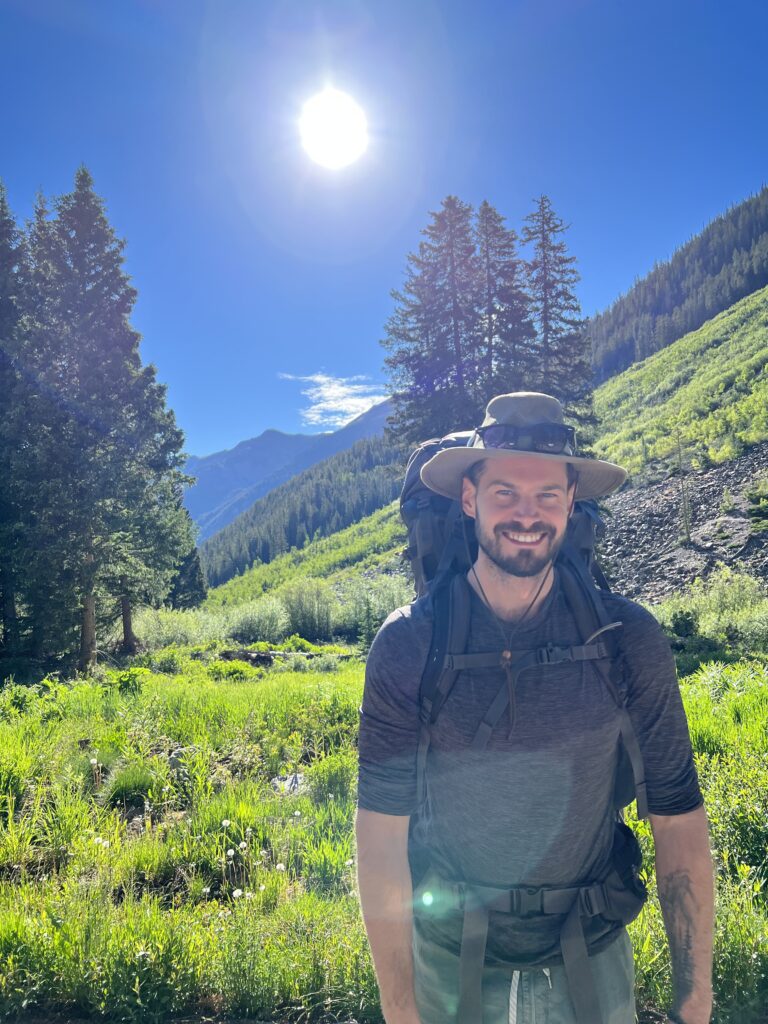
About the author
Jeremy Wasko has been exploring our public lands for over two decades, with thousands of miles and hundreds of camping trips completed.
Through his adventures, he discovered that our public lands are more than just places to camp and recreate. They are cultural and historical sites, sacred places to different peoples, and the very sources of our clean water, air, and other critical resources.
He created Magna Terra to share his knowledge on how to explore and enjoy our public lands, and also how to protect and conserve them for future generations.
Learn more about Jeremy and the founding of Magna Terra here.
